I Do’s Look Different Depending On Where In The World The Wedding Is Happening
We are familiar with common customs and traditions in the Western world. When it comes to weddings, you will be surprised that many countries and tribes around the globe are still following traditions we thought of as long gone, such as paying for a bride or seeing your husband or wife at the altar for the first time (and no, not part of a reality show). This article will introduce you to places around the world and their fascinating wedding traditions and their customary wedding attire. Gone are the days of traditional white dresses, now wedding dresses are all about that pop of spice and dash of color. Each country and culture has its own unique set of colors that they use as well as detailing in their clothes and some of these examples might be ones you’ve never even seen before.
The Broad Plains Of Mongolia
Mongolian tradition states that if two people want to get married they need to take a trip together to the groom’s house and ask for permission to get married. If the groom’s family agrees, they will be in charge of preparing for the wedding.
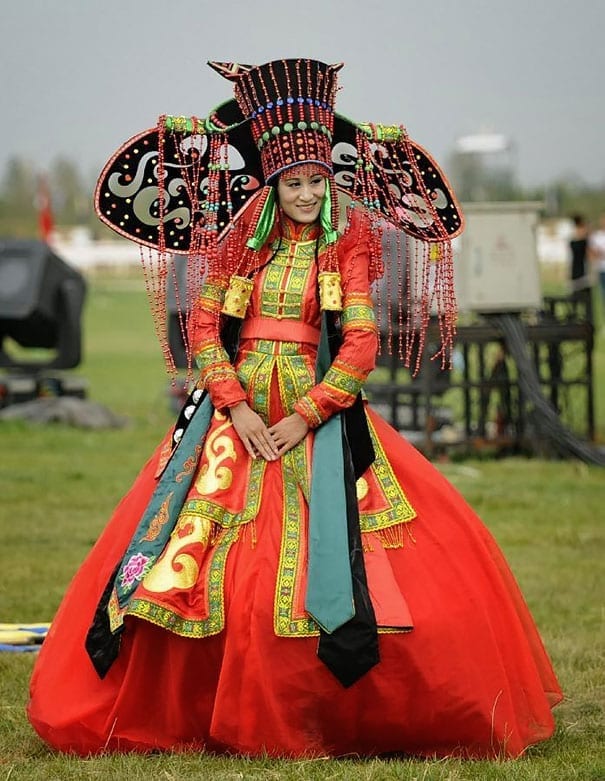
In traditional Mongolian weddings, the bride and groom wear patterned clothes which are called a “deel“. The word “deel” refers to Mongolian clothes in general, which include a lot of everyday wear. There are custom deel, which have been made for centuries and are typically reserved for special occasions such as weddings and holidays.
The Fascinating Traditions Of South Korea
In South Korea, both the bride and groom have traditional outfits for the wedding ceremony. The traditional wedding garment is called hanbok. The bride’s hanbok is called a chima-jeogori and it includes a short jacket with long sleeves and a wrapped skirt.
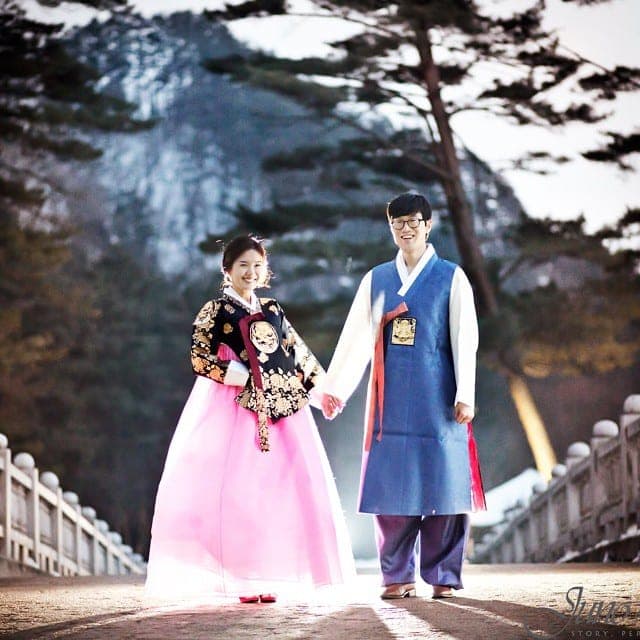
The groom’s hanbok is called a durumagi, which is composed of a a short jacket and loose fitting pants, which are called baji. For the groom to show his new wife that she can count on him, ancient tradition insists that the groom carry his wife around on a sacred table on his back. This act demonstrates how reliable the groom is.
Germany’s Variety Of Bridal Headdresses
Although most of us know Germany for their fine cars, you will be surprised to hear about their wedding traditions. The traditional German bride wears a headdress which varies from region to region. Let’s take the Black Valley for example: their traditional headdress is very big and is decorated with many beads and glass balls. Another example is Buckenburg, where they put emphasis on decorating the headdress with flowers instead of beads.

The center of the German wedding traditions focuses on the tradition the bride and groom do during and before the wedding. These unique German traditions include an entire night for breaking porcelain, which is thought in the German tradition to be a symbol for good luck. In regards to their traditional wedding attire, the German bride usually wears a very minimalist white dress with short trains.
The Precious Decorations Of Portugal
The traditional Portuguese weddings involve layers and layers of old pagan styles combined with more recent Catholic values. Traditionally, the Portuguese bride wears a full-length tunic which covers them from head to toe and is embellished with lots of jewelry.
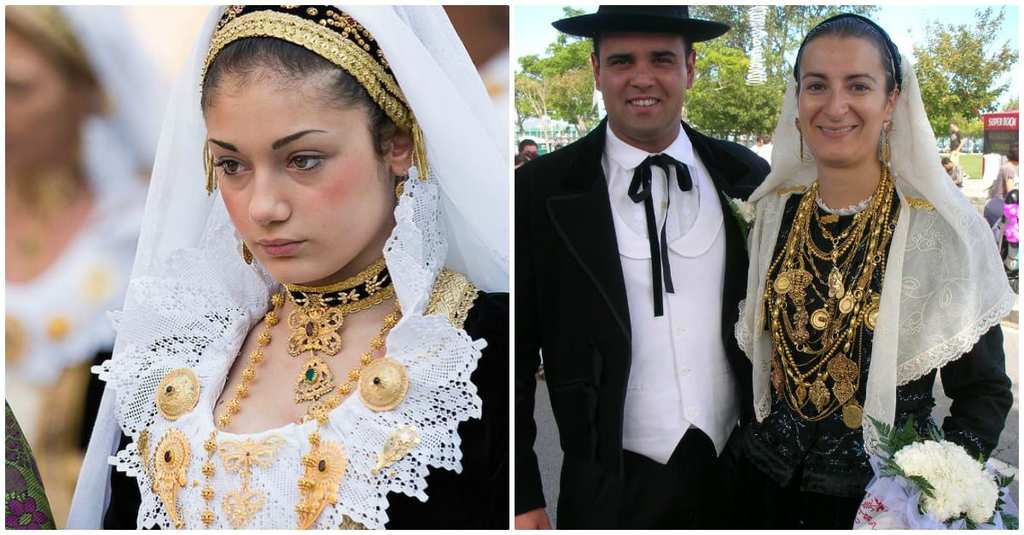
These layers of jewelry are influenced from many different cultures. From the times of the Moors there are the beads, to honor the Catholic Church there are the crosses, and as a homage for the prosperity of the long line of Portuguese royals there is gold. In the olden days, these jewels and gold could also serve as dowry to the groom’s family.
The Vibrant Colors Of Ghana
The Ghanaian couples usually match with their future spouse’s ceremonial attire. The outfits are usually made out of kente, a handwoven cloth made in Ghana. These outfits are customarily colorful, bright colors and geometric patterns. The unique outfits represent the couple’s unique love and bond to one another.
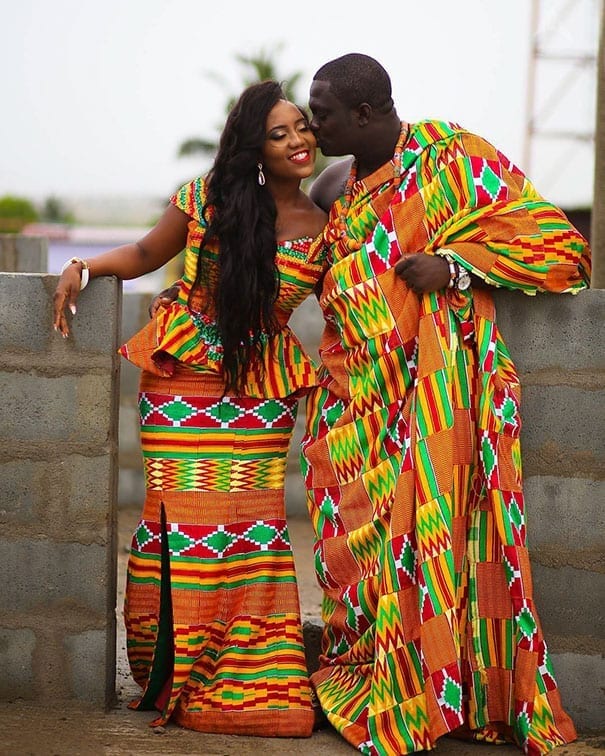
When a man in Ghana feels he is ready to propose to his loved one, they don’t exactly have any privacy. The traditional Ghanaian way to propose is to go to their loved one’s house accompanied by all of their family. They must be very confident that their true love will say yes, otherwise it can get pretty embarrassing.
The Flawless Embroidery Of The Matyó People
The Matyó people are a subgroup in the northern part of Hungary. The Matyó people are known for their impeccable embroidery. Their wedding dresses feature many flowers as a representation of fertility. Another representation of fertility is wheat, which is woven into their headdress also to represent wishes of fortune and prosperity for their new family.
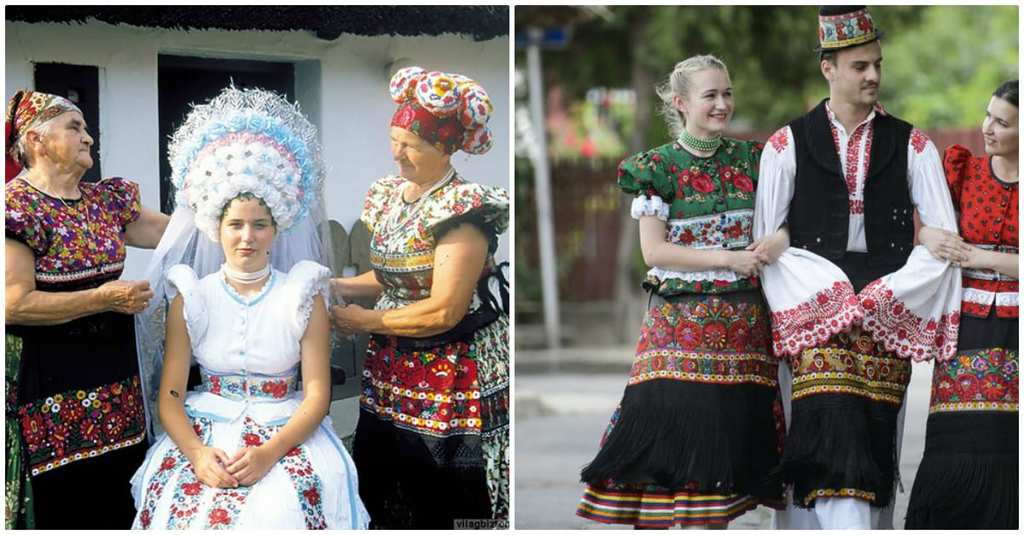
The Matyó people retain their culture and traditions amid many political and cultural shifts that surround them. Fun fact: in eastern Europe you can often hear the phrase: “You’re no Matyó embroidery!” The fact that this is a part of local cultures points to the high esteem in which their neighbors hold them.
The Uniqueness Of Nigeria
In Nigeria, wedding ceremonies can be pretty unique and different from region to region. After all, this economic powerhouse is the most populated country in Africa. Nigeria is a massively diverse space that contains within it more than 250 different ethnic groups.
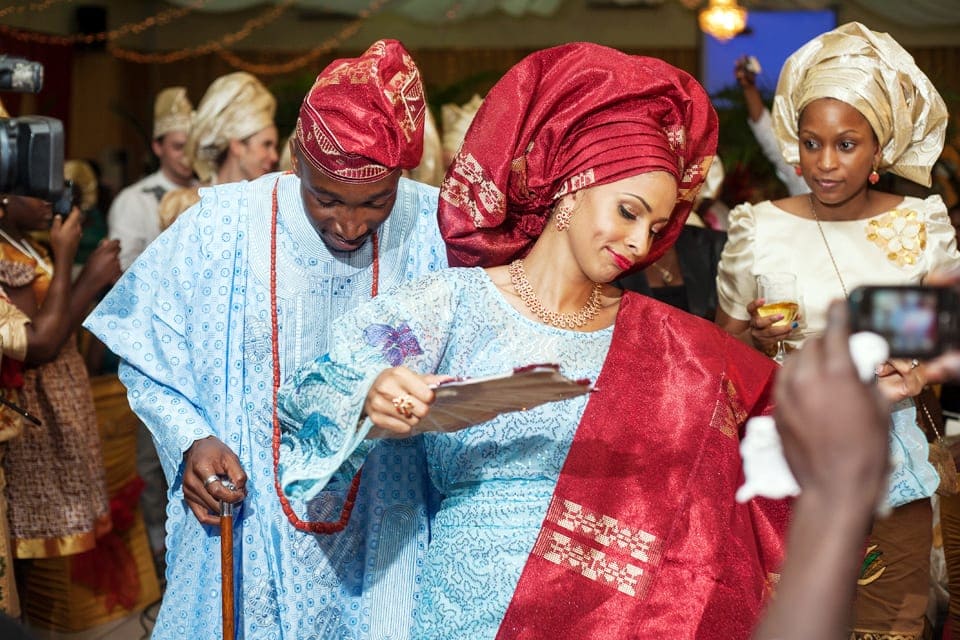
One thing that most of these cultures have in common is the fact that the bride’s wedding clothes will be brightly colored, along with a unique head tie called a gele. Also, as in many West African cultures, the bride and groom match the colors of their wedding attire.
The Philippines Representing Infinity
In a small island in The Philippines, you will find the Yakan, an ethnolinguistic group that inhabits the Basilan island. The Yakan’s traditional weddings consist of two ceremonies. There is an Islamic ritual and a pre-Islamic ritual. Both ceremonies are arranged by the bride’s and groom’s parents. The happy couple wears paint all over their faces for the ceremony.
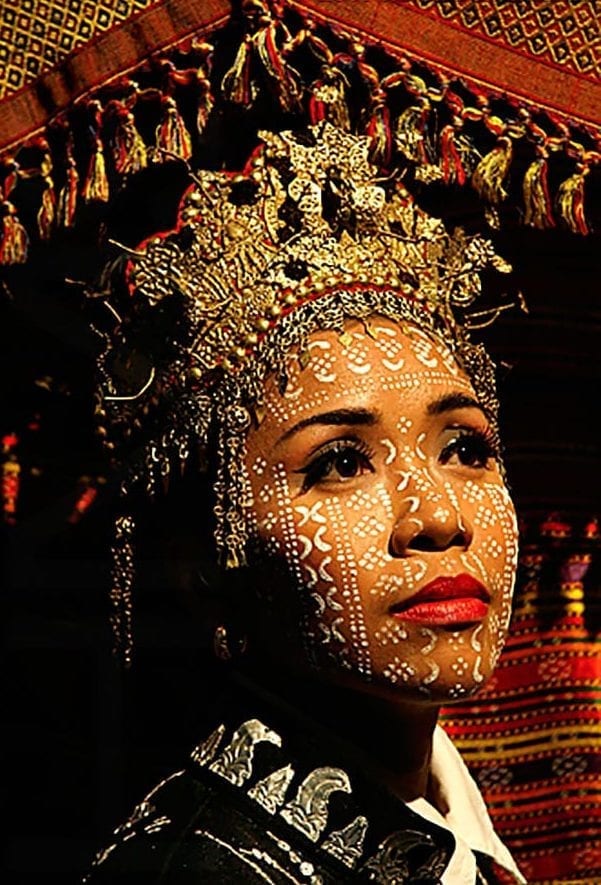
The non-Muslim families usually follow a more traditional Catholic wedding ceremony style. The wedding attire includes a veil for the bride and a rope shaped as an ‘8’, which represents infinity. The bride and groom will wear the rope around their heads.
Vietnam’s Wedding Fashion Trend
Similar to the Western world, the Vietnamese wedding process begins with a proposal. The family of the groom visits the bride’s family to ask for their permission. In past history, the actual purpose of weddings was often in order to create an alliance between families in the community.
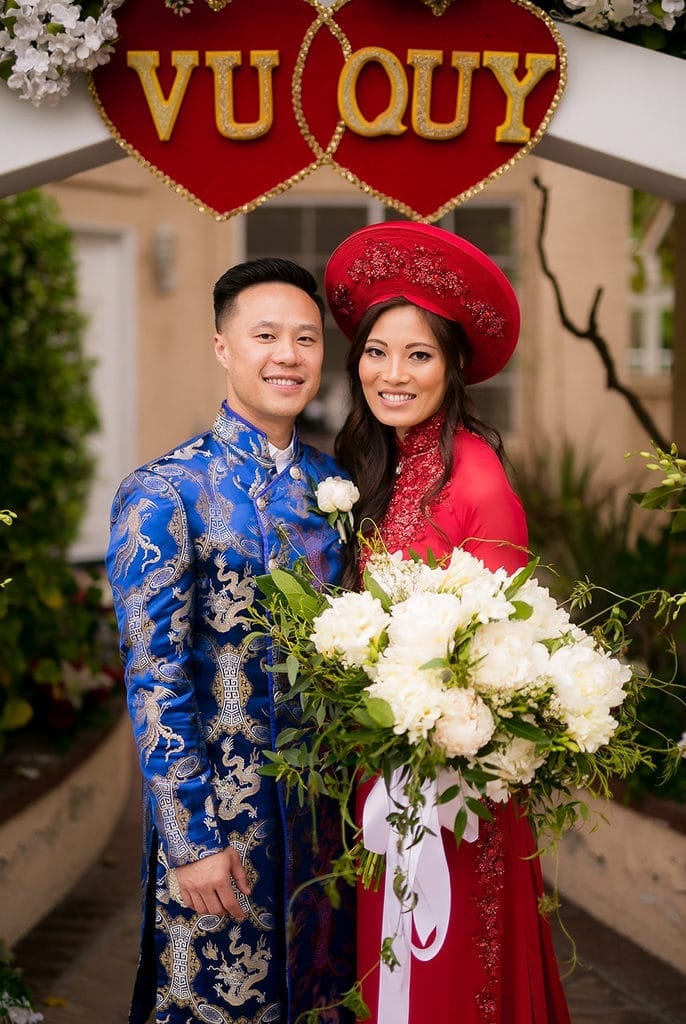
Regarding the wedding attire in Vietnam, traditional Vietnamese wedding clothing has always been diverse. The diversity depends on the region and the specific occasion taking place, resulting in varied styles of wedding clothes. The trendiest wedding trend of the Nguyễn Dynasty has remained popular. This popular fashion trend can be seen both in Vietnam and outside of the country. Many couples take the Nguyễn Dynasty style and alter it to their personal taste.
The Special Traditions Of Native American Tribes
There are many different thousands of Native American tribes, each tribe has its own customs and wedding traditions. Something that all of them have in common is the fact that they all greatly differ from conventional modern weddings. When it comes to traditional wedding clothing, members of many indigenous nations in North America wear a traditional dress featuring four colors. Each of the four colors is related to a different direction: black is north, blue is south, yellow is west, and white is east.
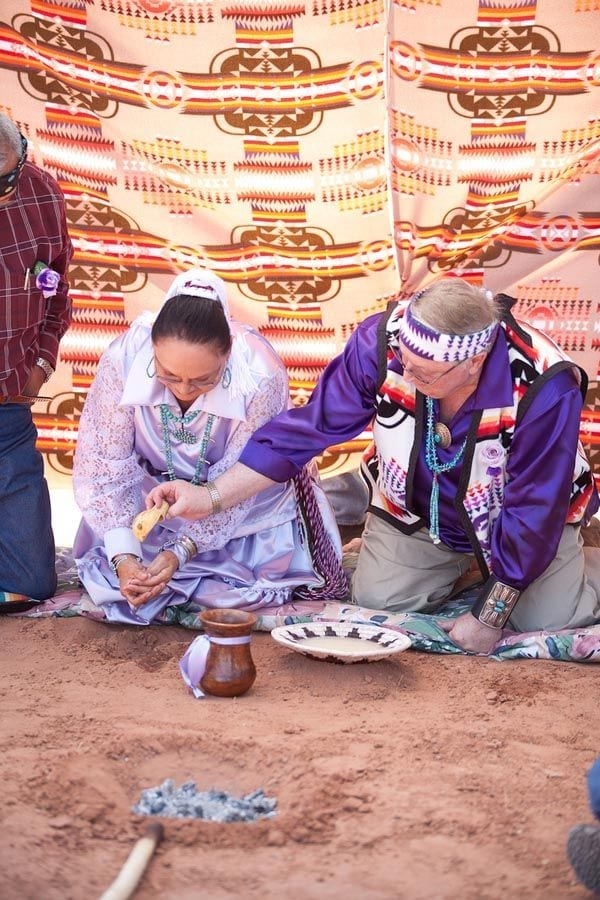
In regards to jewelry, the traditional jewelry of natives of the American Southwest is mostly made out of silver and turquoise. In the traditional weddings, the jewelry isn’t added just for beauty, but for a protection purpose against all evil things that the newlyweds can face in their future.
India’s Promise Of Love
In India, wedding dresses are taken very seriously. The dress will be made of sixteen different embellished layers filled with symbolism and all made to ensure the happiness of the marriage. The Indian wedding dress, or in its traditional name, a sari, will usually be red in order to represent the rising sun.
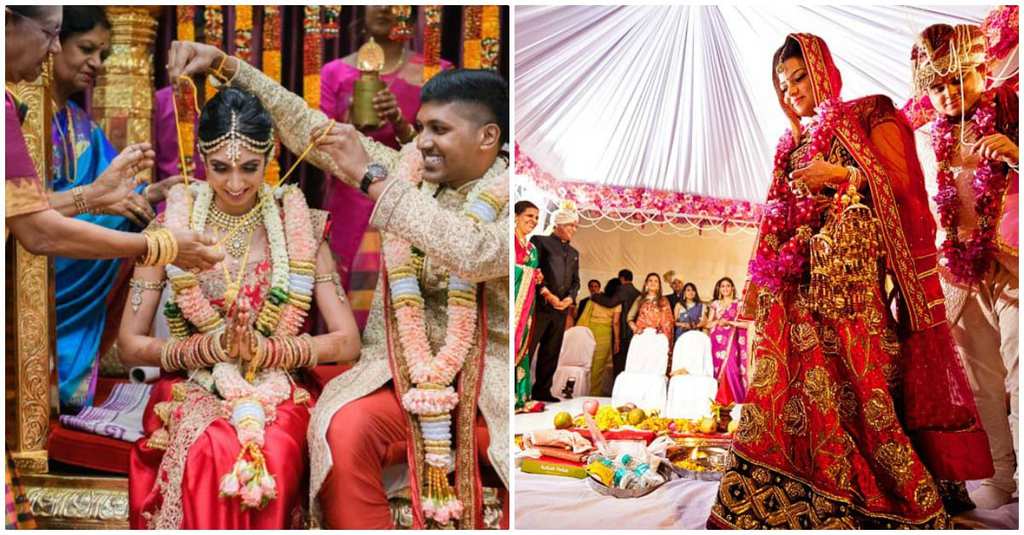
In addition to everything the bride is already wearing, including many bangles, there will be added another layer later in the ceremony called the jaimala. This is when the bride and groom place flower necklaces on each other in promise of love.
The Jewish Yemenite Henna
As part of the ancient traditions of the Jewish diaspora in Yemen, the bride wears traditional jewelry and a massive headdress with flower and jewel decorations. These decorations are believed to scare off all evil. They wove gold threads into the bride’s wedding attire. Traditionally, the wedding lasts five to seven days.
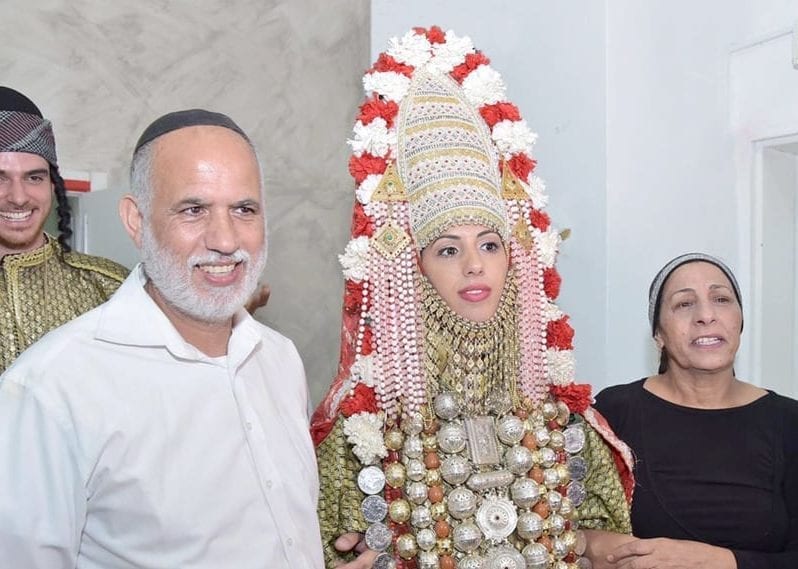
If we take a closer into traditional weddings, the bride is also expected to decorate her hands with henna. This tradition is similar to the traditions of Hindu brides. Additionally, the bride must also remain in the premises of her parents home while the wedding preparations are taking place.
East Meets West In Sri Lanka
On the South Asian island nation of Sri Lanka, you can very easily see the effect both the East and the West have on traditional weddings. The heavy embroidery which can be seen on their saris shares the cultural ties with nearby India and beyond, while the bride’s long lace veils show the strong influence from Europe.
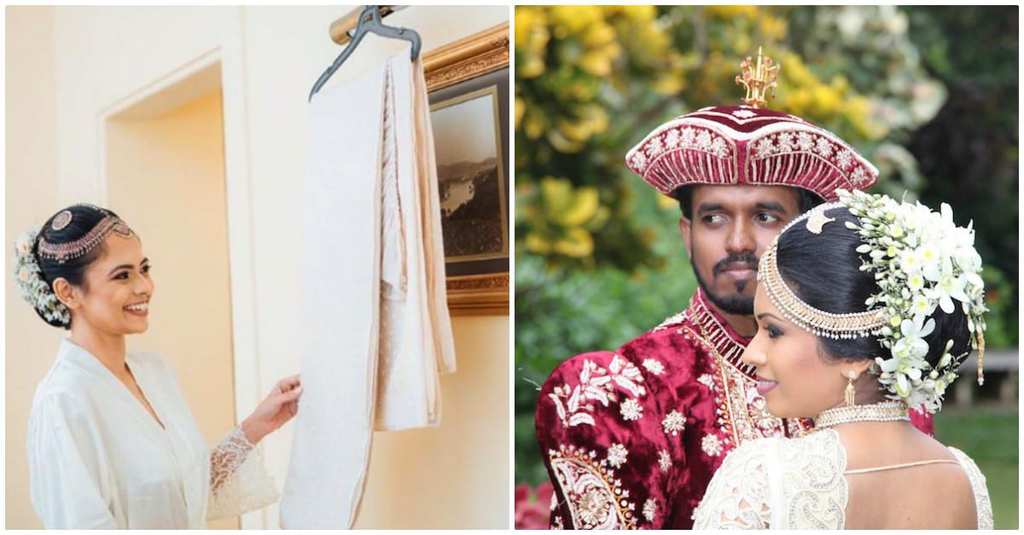
Besides wearing a sari and a long lace veil, the Sri Lankan will also wear a traditional headpiece called a nalapata. The groom will wear a four cornered hat, as well as a velvet jacket, and a long white waist cloth called a mul anduma.
The Rich History Of The Sami People
Even though today Scandinavia is divided into different countries and regions, they all share much history and customs. One of the long-lasting cultures in the Scandinavian area is called the Sami. The Sami people are known to belong to the northern part of Scandinavia, stretching across parts of Sweden, Finland, Norway, and the Kola Peninsula.
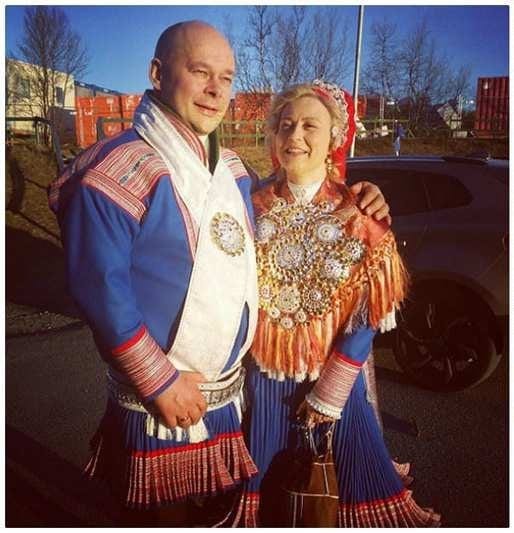
The Sami’s extraordinarily bright traditional clothing represents many things about the person that is wearing them, including their marital status. Another interesting fact is that reindeer are native to this region and the Sami are famous for herding them and finding a purpose for every part of the animal: milk, hide, meat, antlers, you name it.
The Amish And Their Handmade Wedding Dresses
There are many different Amish communities around the world. Each community has their own wedding traditions, which means that even the Amish wedding dresses can vary from community to community. In one of the Amish communities, the bride wears a black dress matched with a white apron and a cape. In other Amish communities, the bride chooses her dress color but wears a white apron and cape as well.
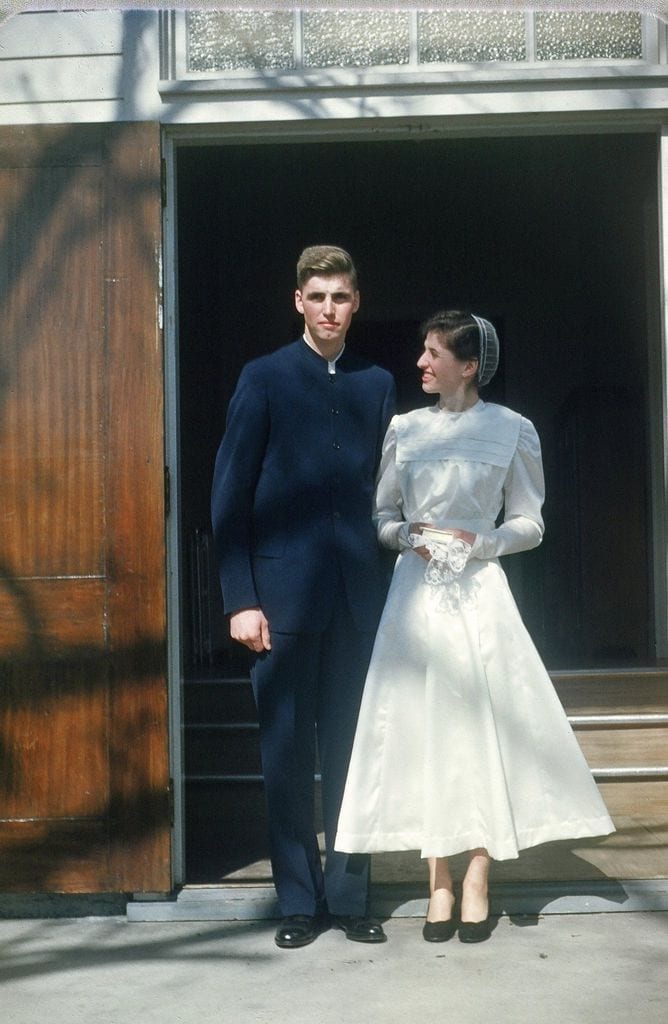
In some Amish communities, the bride sews her own wedding dress, while in other communities they have their mothers or other close women friends or family sew their wedding dress. In the Swiss Amish community they have may different customs and traditions that aren’t common with the other non-Swiss Amish communities.
The Traditional Celtic Dress
Most of the Celtic wedding traditions and customs find their inspiration from the spring season. From ancient times to the modern day, location is key and critical when planning a Celtic wedding. In the British Isles, wedding clothing plays a major part in the Celtic-style ceremony.
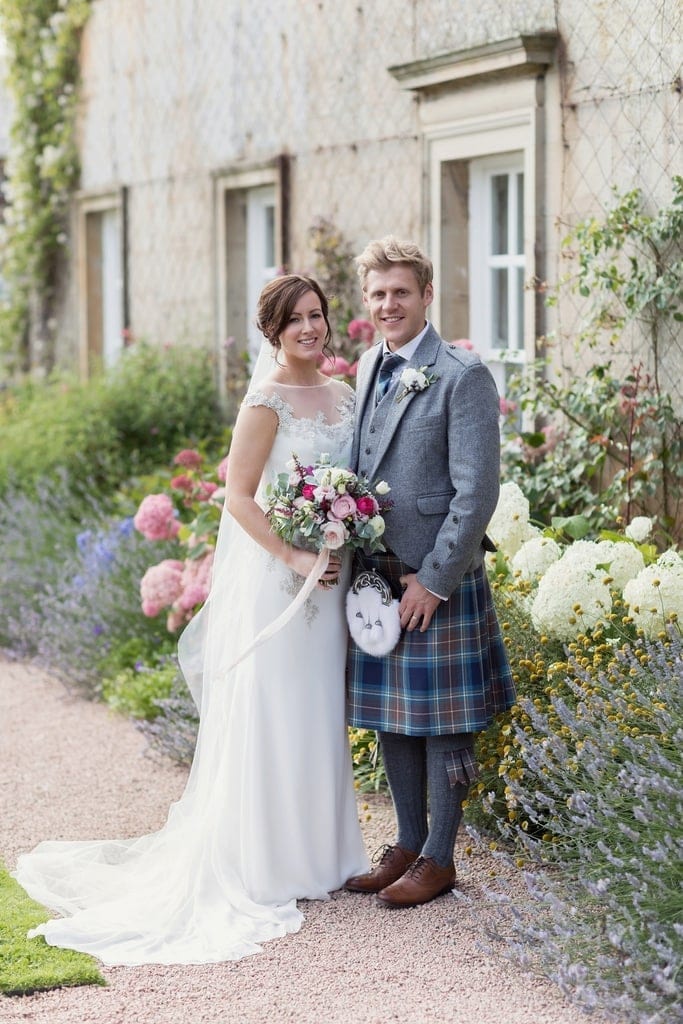
In the Scottish variation of the Celtic tradition, kilts are extremely popular. Naturally the Scots like to wear their families colorful plaids. The groomsmen will not be wearing kilts, they for sure will be wearing vests or sashes that will be made from the same fabric as the groom’s kilt. It is a tradition in Scottish wedding that the groom gives his bride a piece of his family’s plaid so she can pin it on her dress after the happy couple exchanges their rings.
The Different Clans Of Scotland
Have you ever heard the tale of Scottish men getting married in skirts? Well, it’s not exactly how the tale is told. Waist-wrapped clothes or in their Scottish name, a kilt, are the traditional wedding attire of the Scottish groom. The kilt will have the colors of the clan the groom was born into.
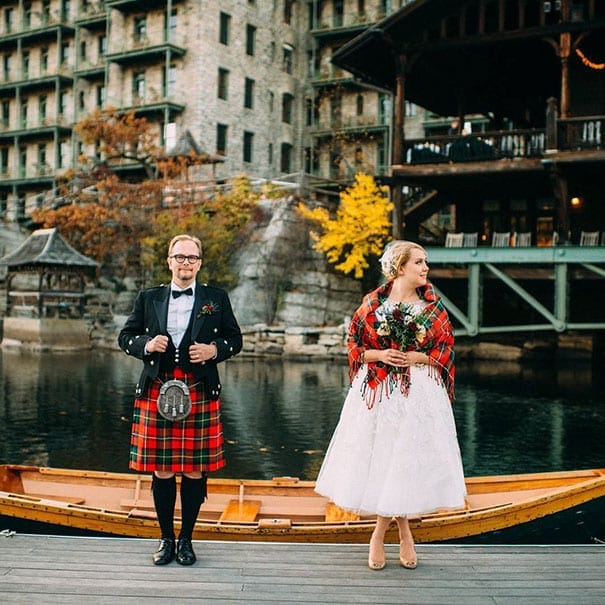
Wearing the kilt of your clan on your wedding day is a tradition in Scotland. After the wedding ceremony, the groom’s family gifts the bride a shawl with the colors of the groom’s clan to show the brides transition into his family.
Kenya’s “Kupamba” Wedding Party
As part of a traditional Maasai wedding, the bride is required to wear a bold and colorful beaded necklace. The night of the wedding is when the “kupamba” party happens. During the “kupamba” party the Maasai bride is allowed to take off her veil and show her jewels and hairstyle.
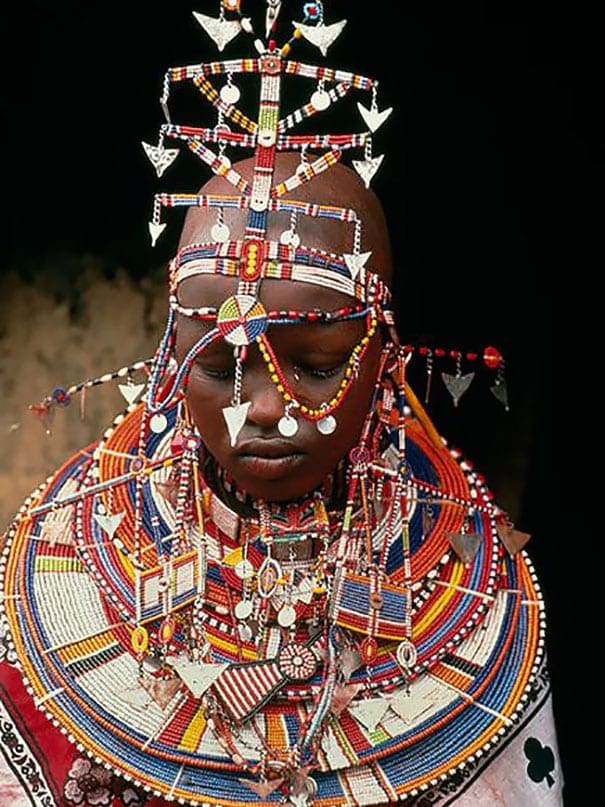
Moreover, before the wedding the bride needs to shave her head, as this act is meant to symbolize her new life in the wedding. The Maasai bride is also expected to come to the wedding with all of her belongings.
Bulgaria And Their Practice of “Gelena”
The Bulgarian Pomak practice of “gelena” involves the bride covering her face white paint and adding a touch of colorful sequins. This practice occurs in remote southwestern town of Ribnovo. In a small private ceremony which only female in laws can attend, the bride’s face is covered with thick white chalky paint decorated with the colorful sequins mentioned before.
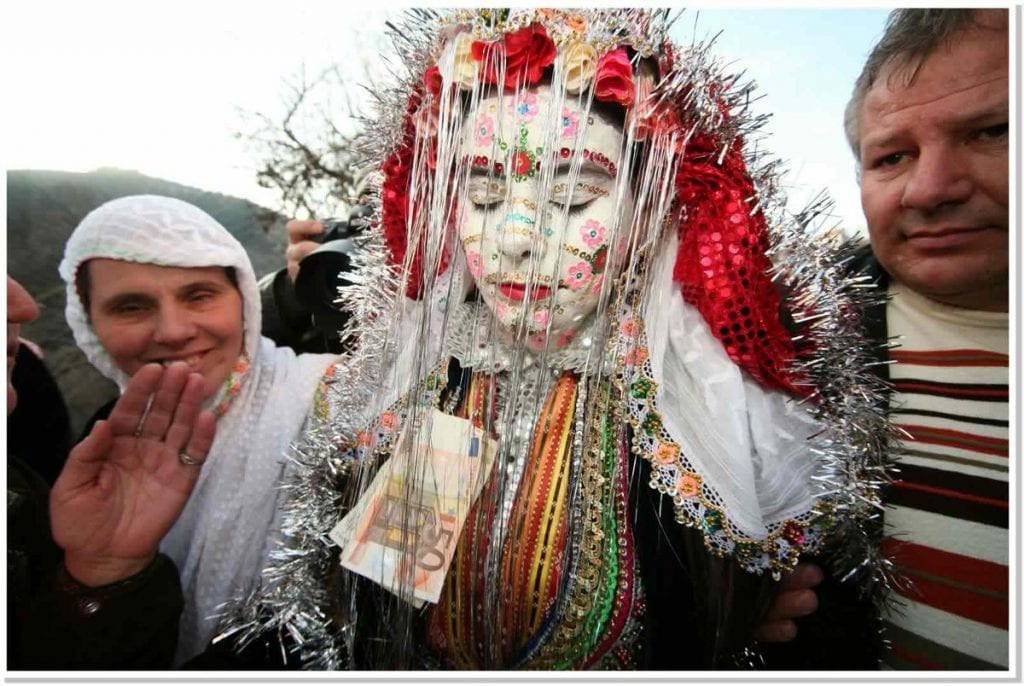
Then, the bride and groom to be will be in charge of leading a traditional horo dance, joined by the village’s youth on the central square. The bride’s hair will be covered with a long red veil, her head will be framed with tinsel, and her painted face will be decorated with veiled silvery filaments.
Bhutan Wedding Bond
The Bhutanese weddings have become a popular tourist attraction over the past couple of years. A traditional Bhutanese wedding is far more than just an exchange of vows and rings. This Himalayan Buddhist people believe that marriage represents the significance of the bond between a husband and wife.

In a traditional Bhutanese wedding, you can see many different religious traditions which are performed by Buddhist monks. Besides doing the religious traditions, there is also the traditional wedding attire: the groom wears a gho, and the Bhutanese bride wears a kira with a scarf.
Tonga’s Unusual First Step
In the remote island of Tonga the traditional way to get engaged takes a somewhat unusual first step. This unusual step is…friendship. Before they can become a couple and date, the groom to be needs to convince his future wife that she wants to be his friend, and accept his hand in friendship. This tradition is called fai kaume.
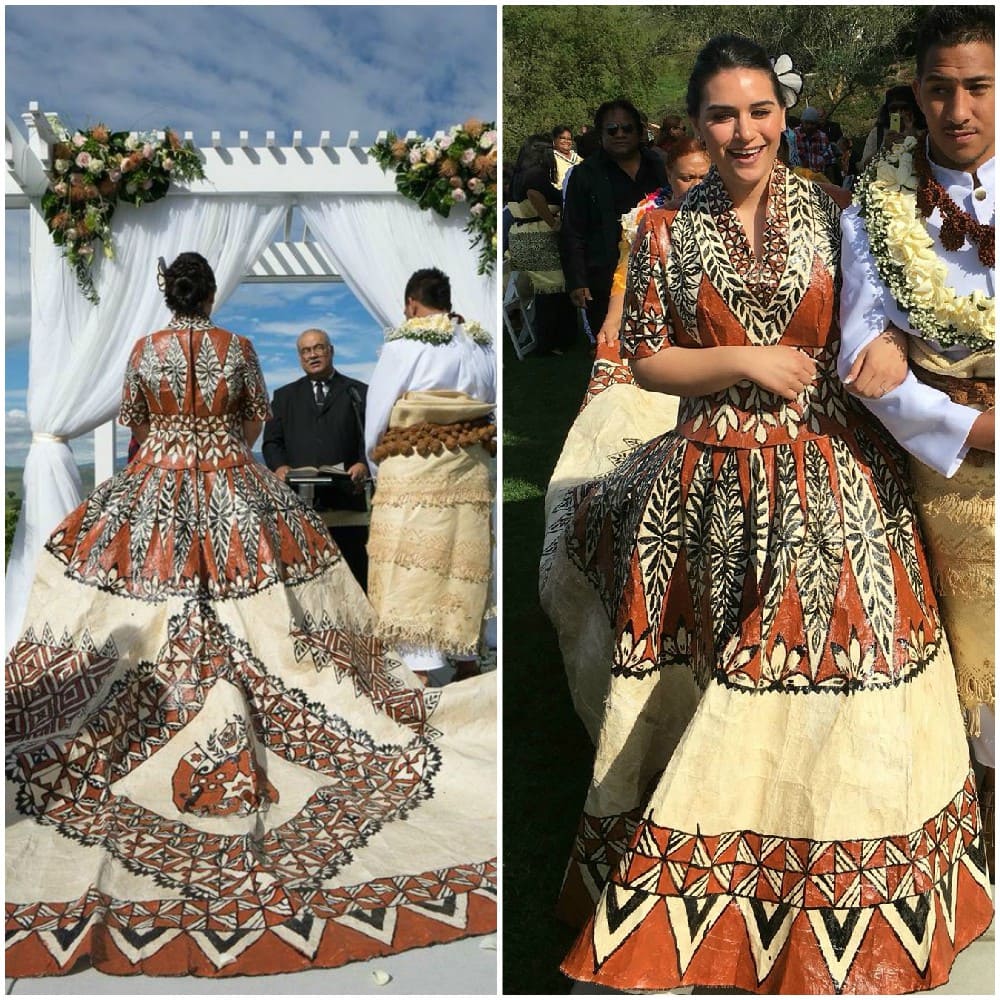
When the bride-to-be is convinced she would like to be his friend, the groom moves on to his next task, convincing the bride-to-be parents he is worthy of her hand in marriage. The future groom needs to go to her parents house and asking her parents their permission to see her every time. This tradition is called faitohi. If everyone consents, the couple finally becomes engaged. Before the actual wedding, the happy couple will have an important celebration called a fakalelea.
The Kidnapping of A Caucasus Mountains Georgian Bride
In the Caucasus mountains of Georgia, many wedding tradition have stayed the same for many years, even centuries. Many of the Georgian customs reflect their warring nature of the mountains surrounding them where many different groups of people needed to fight continuously for their survival.
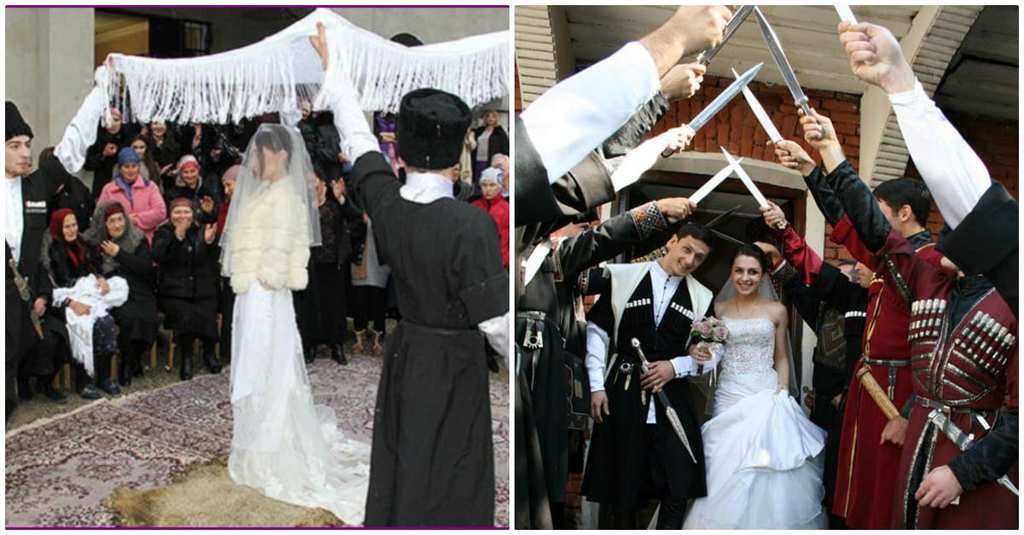
In a Georgian wedding, the bride is carried under a four-post canopy to show she is protected. During the wedding, the groom wears a sheath in his belt. At the end of the ceremony, the bride’s family kidnaps her. This is done in order for the groom to prove he is capable of taking care of his bride and rescuing her.
The Week Long Celebrations Of Morocco’s Weddings
Moroccans are known for going all out for their lavish, loud, joyous wedding events. The Moroccan bride wears a dress called takchita during the wedding. The groom’s family carries the bride on a 4-legged amariyah to show the groom’s ability to take care of and support his bride.
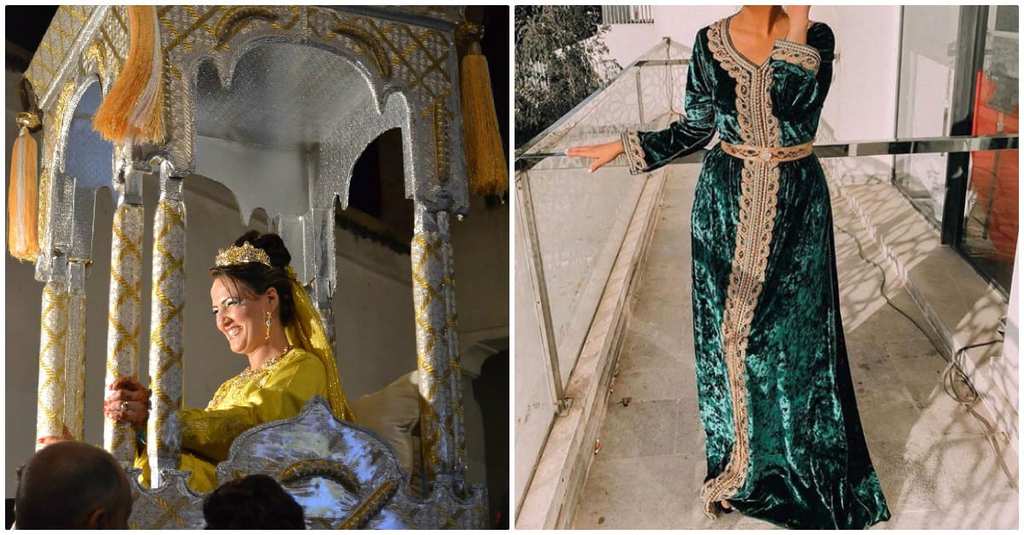
The Moroccan wedding ceremony can last up to a week and includes many celebrations. To start off the celebrations, the bride and groom have separate parties with their families. Then, they come together to celebrate the legal ceremony and have a joint celebration which symbolize their marriage to one another and the bringing of their two families together.
Golden Indonesia
Similar to the architecture seen across Indonesia, most Indonesian weddings feature a lot of gold. The gold can be seen on the bride’s headdresses and on bride and groom’s jewelry. The usage of all these gold objects results in the couple sparkling all over their bodies.
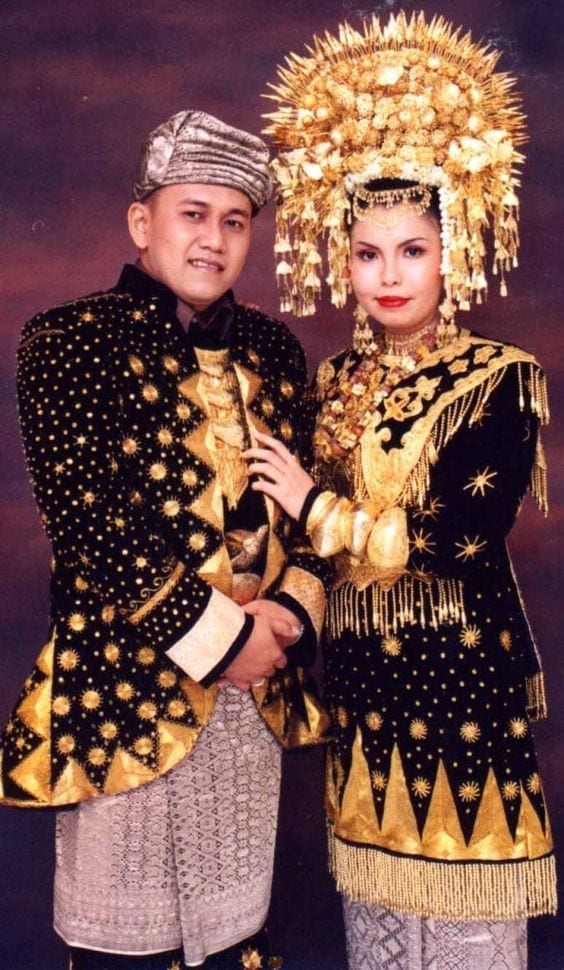
We can easily understand from Indonesian architecture, such as gold-adorned monuments, that the Indonesian empires had their fair share of gold, glory, and wealth. Wearing gold in an Indonesian wedding goes back to the tradition of honoring Indonesia past, as well as their kings and queens.
The Wonders Of The Aboriginal Australians
In the many Aboriginal Australian cultures, it is believed that smoke has cleansing and healing powers that protects against evil spirits. During a wedding ceremony, they also burn plants in a fire or use smudge sticks, and the smoke that comes out is fanned over the guests.
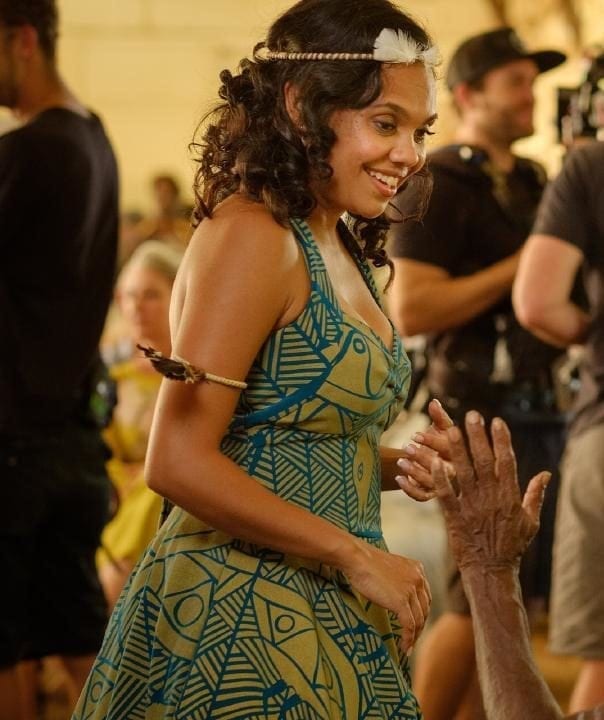
The Aboriginal people put major importance in acknowledging the land, who the land belongs to now and the ones that were here before us. This tradition is thought to bring good luck and start the marriage on a positive note. Another tradition is the usage of bright body paint, which reflects the individual’s family and their ancestors. This tradition is a very spiritual practice and is mostly done in weddings.
Papua New Guinea Clamshells Payment
Although we thought that buying a wife is long gone, to our surprise in some parts of Papua New Guinea, it is still acceptable for a groom to purchase his wife before the wedding ceremony. In some instances the payment is done with golden-edged clamshells. In some other areas the payment is done by an endowment.
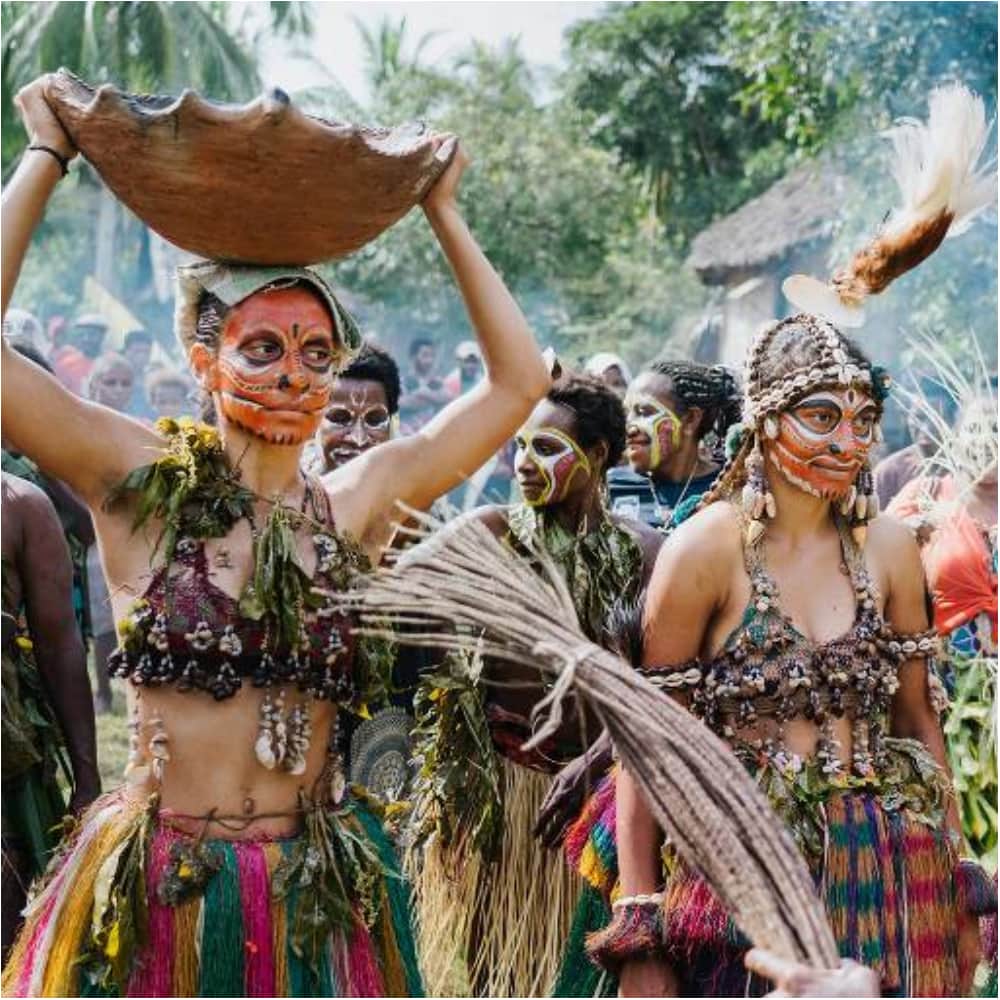
In Papua New Guinea, weddings are considered an essential occasion where you wear special clothing. Weddings are also a perfect occasion to show off some glitzy accessories, such as seashells and wear colorful face paint. The Papuan bride wears dyed grass aprons, open on the sides. In some places it is common to cover the body with mud or clay.
Tongan Weddings And Their Symbolic Environment
Similar to other Polynesian islands and cultures, Tongan weddings are very symbolic of the environment that surrounds them. The Tongan women wear a handmade colorful wrap that covers their torso to their knees. The men also wear a wrap that covers everything from the waist down. You can see some of the Tongan handmade attire at Tiare ‘O Patitifa.
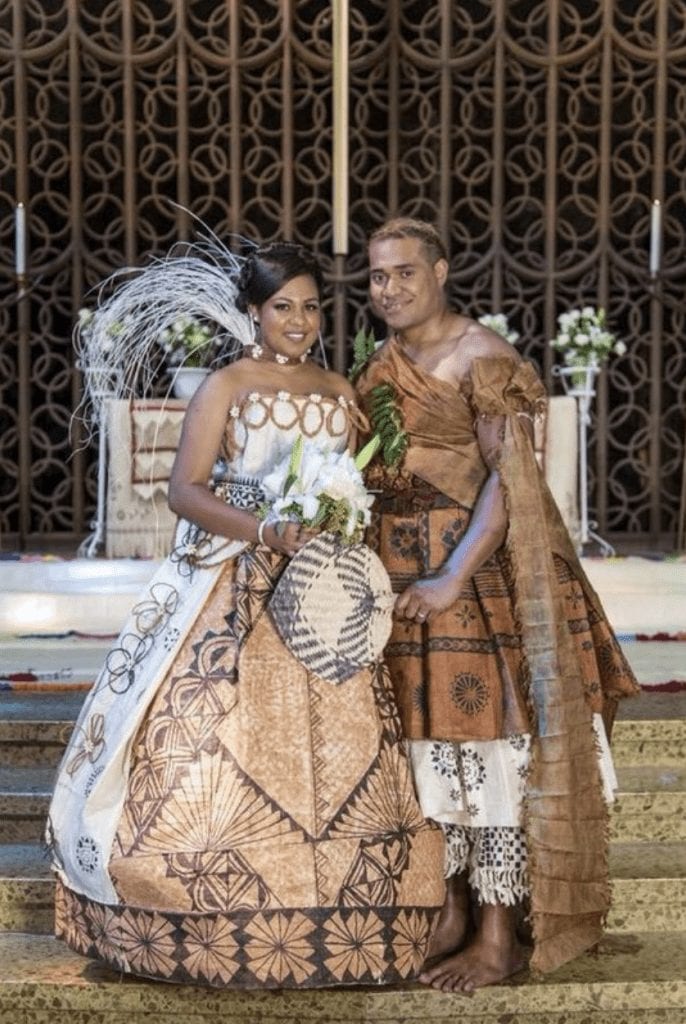
In Tonga, even the priest that marries the couple needs to dress a certain way. The priest wears a feathered headdress, which symbolizes the divine right given to him by the higher powers to marry this couple. The couple goes to sea in a canoe in order to symbolize the isolation of their love.
Once In a Lifetime Event In Sardinia
The traditional Sardinian weddings are a colorful happy occasion. The Sardinians believe that weddings are a once in a lifetime event, this is way they make this occasion memorable. Not only the occasion is colorful but also the wedding dress is a sight to behold. The ceremony is filled with many traditions; the Sardinians feel that weddings are a great opportunity to showcase their culture.
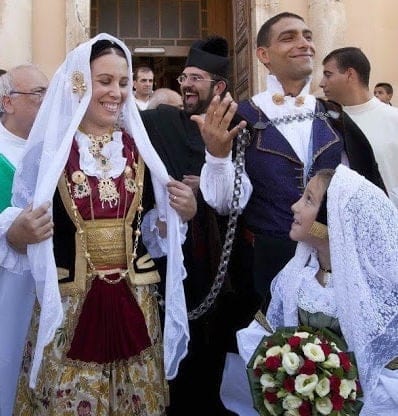
“Sa Razzia” is one of the most common traditions. It is a dish of rice served with wheat, salt, coins and rose petals. This dish will be broken and close to the bride and groom’s door. This is a special tradition that’s observed in Italy during every wedding.
Color Is The Name of The Game in Peru
For the Peruvian wedding, the bride wears a pollera, which is a bright handwoven skirt hearkening back to the pre-Columbian days of Incan culture, while the groom wears a headdress. Both the bride and groom will wear a poncho or a cloak.
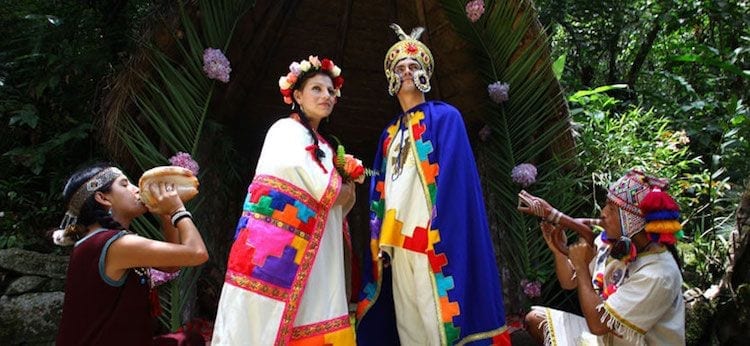
Being colorful is completely the name of the game in Peruvian weddings. The usage of these decorations and styles are to show the strength of the Incan empire that once ruled the region and beyond it. The capital of the Incan tribe was Machu Picchu in the mountains of Peru. The Peruvian wedding cakes are decorated in the same colors as their dress, and they contain a hidden ring on a ribbon.
The Traditional Combination of Greek Weddings
In Greek weddings, there is a combination of ancient pagan traditions and those of the Greek Orthodox Church. One of the older traditions demands from the bride’s family to place a lump of sugar in the bride’s glove. This is done to ensure the bride has a sweet life. They also ask to insert a gold coin in the inside of her shoe in order to bring good fortune.
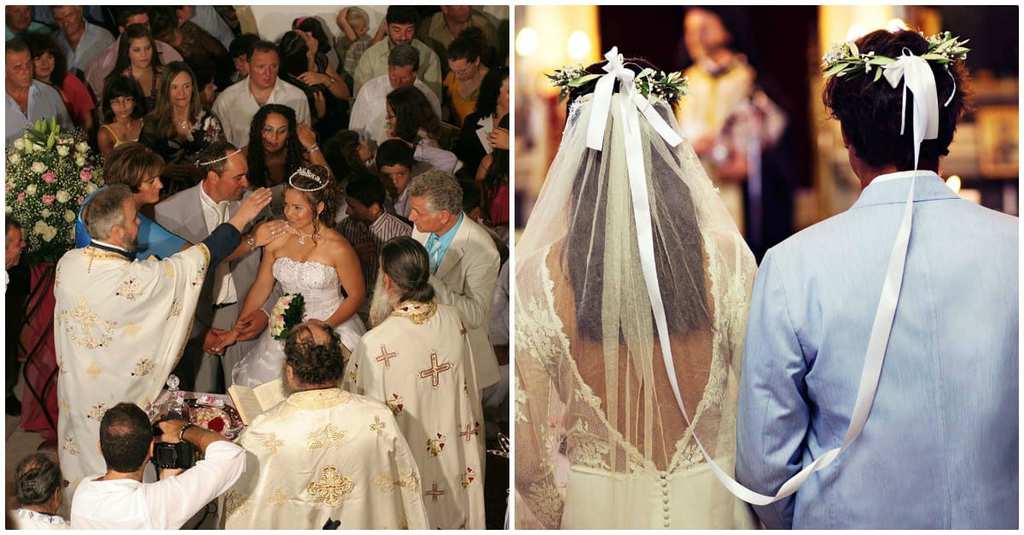
Another Greek tradition is that the groom puts a piece of iron in his pocket in order to scare off evil spirits throughout his happy day. The priest will place crowns on the couples heads joined by a ribbon, this is called stefana. This tradition is done to represent the couple’s new unity.
The Week-Long Wedding Of Eritrea
In Eritrea, the bride and groom match their outfits and the colors of their outfits in order to symbolize their bond. The Eritrean weddings last an entire week. They begin with the families exchanging gifts to each other. Then, they celebrate the match with a day filled with songs and dances. Then the two families have a large feast to celebrate and symbolize long health.
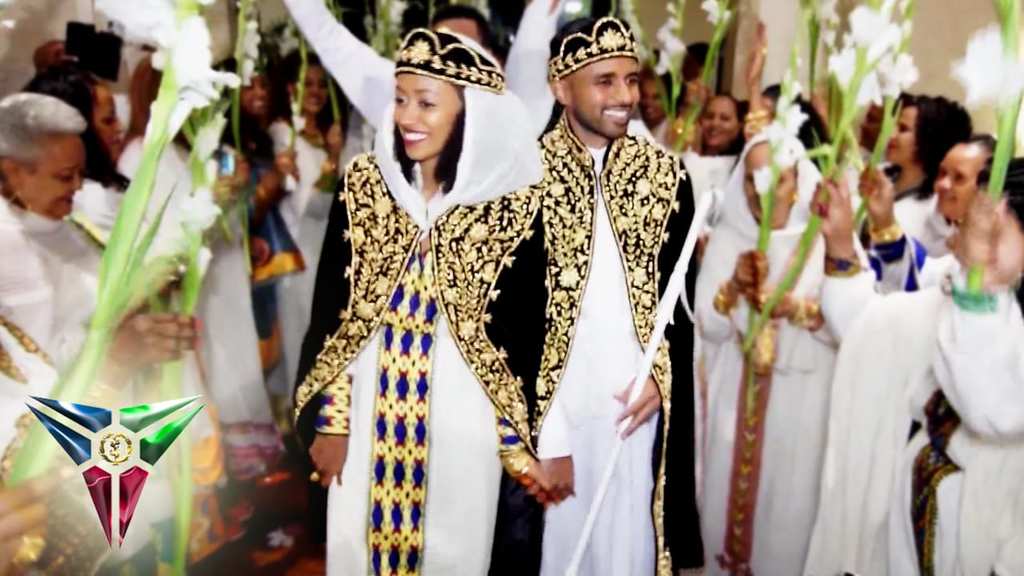
After the feast, there are two traditional songs which are mandatory to sing; the Awelo and the Masse. The Awelo names and honors each member of the families, while the Masse honors the women who made the traditional food for the feast.
The Many Stages Of A Japanese Wedding
In Japan, each family makes a part of the wedding clothing for the other family. The husband’s family will gift the bride with a white sash called an obi, which she will wear over her white kimono. The bride’s family will gift the groom with an hakama which are pleated pants and a jacket called a haori, which he will wear over his (usually) black kimono.
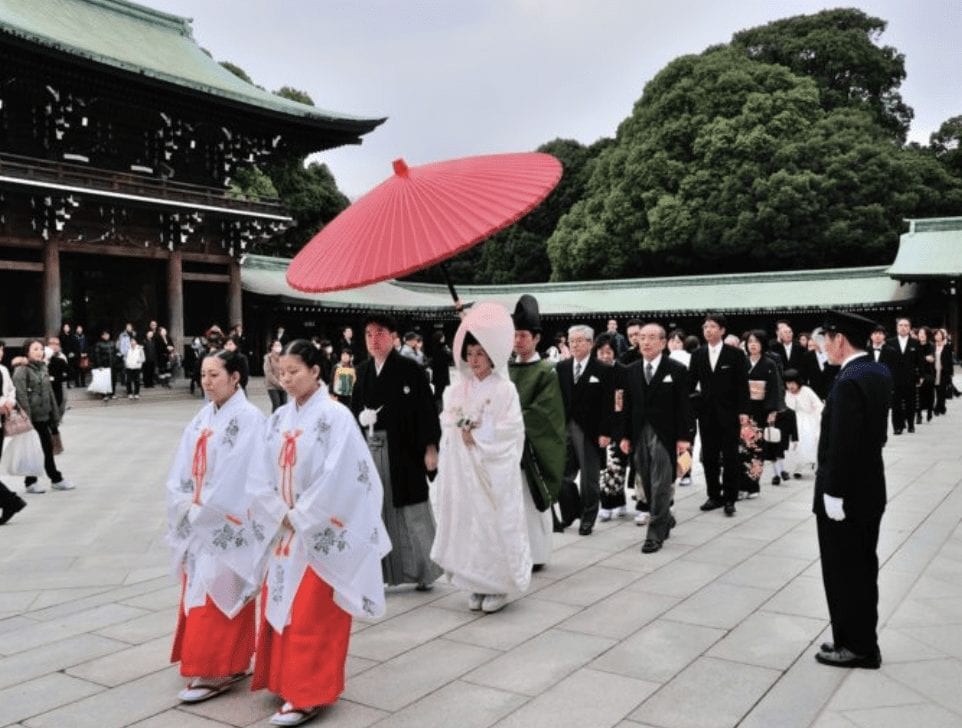
In a traditional Japanese wedding, there are many stages, each steeped in ritual and precision. The stages include a big dinner for the two happy families in which they will exchange gifts. There is also a stage where they will gift each other the wedding attire they prepared.
Kazakhstan And Their Special Headdress
In traditional Kazakh weddings, the bride wears a headdress called a “Saukele“. The Saukele is a cone-shaped hat, which is trimmed with fur. Because of the materials it requires, the Saukele is one of the most expensive objects of any wedding ceremony.
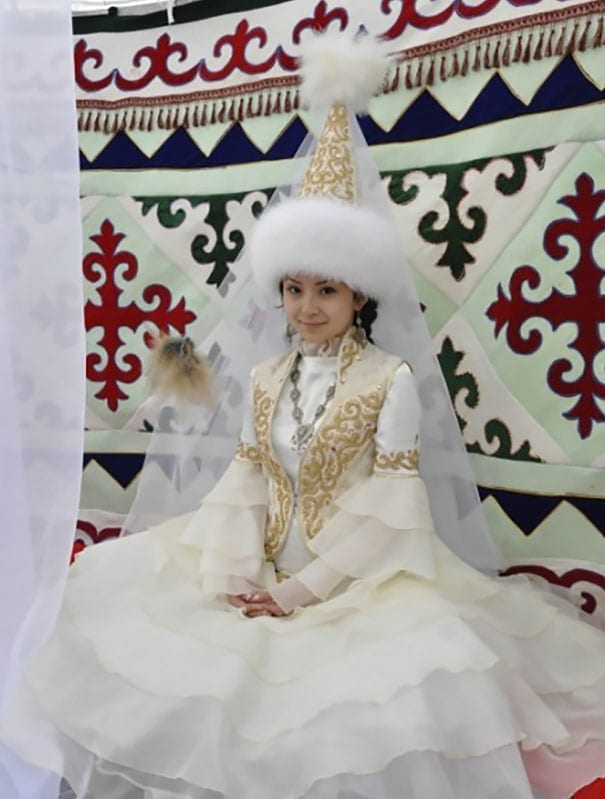
The wealthier brides will decorate the upper part of the hat with a semi- precious stone and blue velvet fabric or gold thread. The less wealthy brides will probably make their Saukele from a cheaper material such as satin. Additionally they will also use less precious beads, which are made of glass, in order to decorate their headpiece.
The Winds Of Change In The Ivory Coast
Tradition reigns in the Ivory Coast. While the government ended polygamy back in 1964, it remains a widely accepted practice in many native groups. A 16-year-old girl or an 18-year-old boy can legally get married in this West African nation.
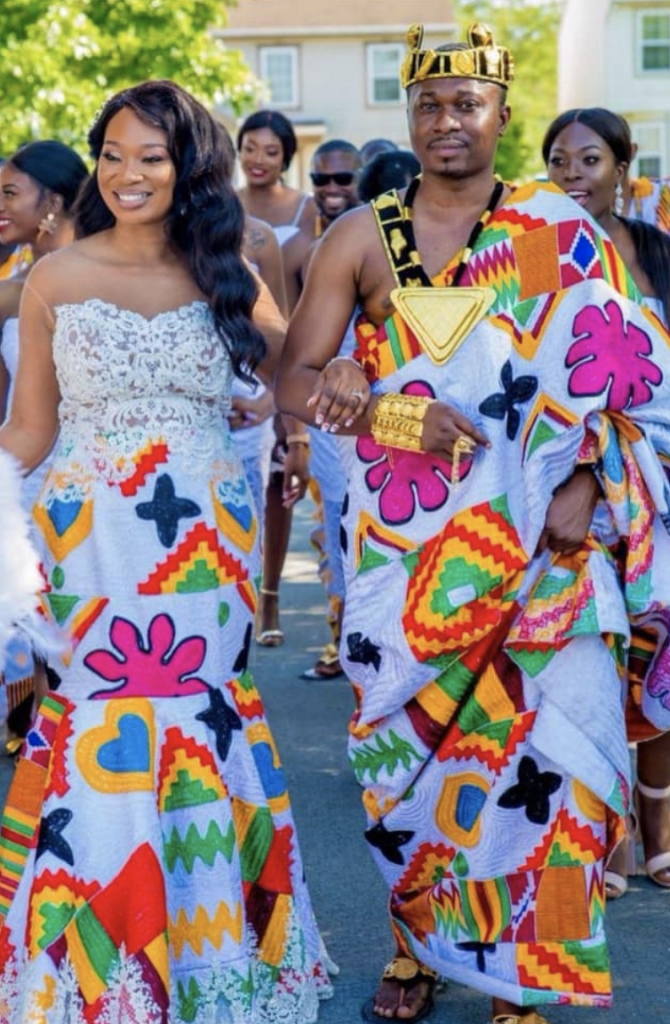
With weddings, traditional rituals are observed even in the face of continued Westernization and a culture that often looks to foreign colonizer France for cues. The Kente/Kita, the traditional fabric used for preparing wedding clothes, is popular across West Africa.
Extravagant Saudi Arabia
Culturally speaking, weddings in Saudi Arabia are a huge and expensive occasion. There is no religious wedding ceremony; instead they celebrate with a combination of an extravagant fashion show and a bachelorette party. The couple invites their guests at around 10PM, where the men enter one ballroom where they can hang out with the groom, and the women go into another hall where they wait for the bride.
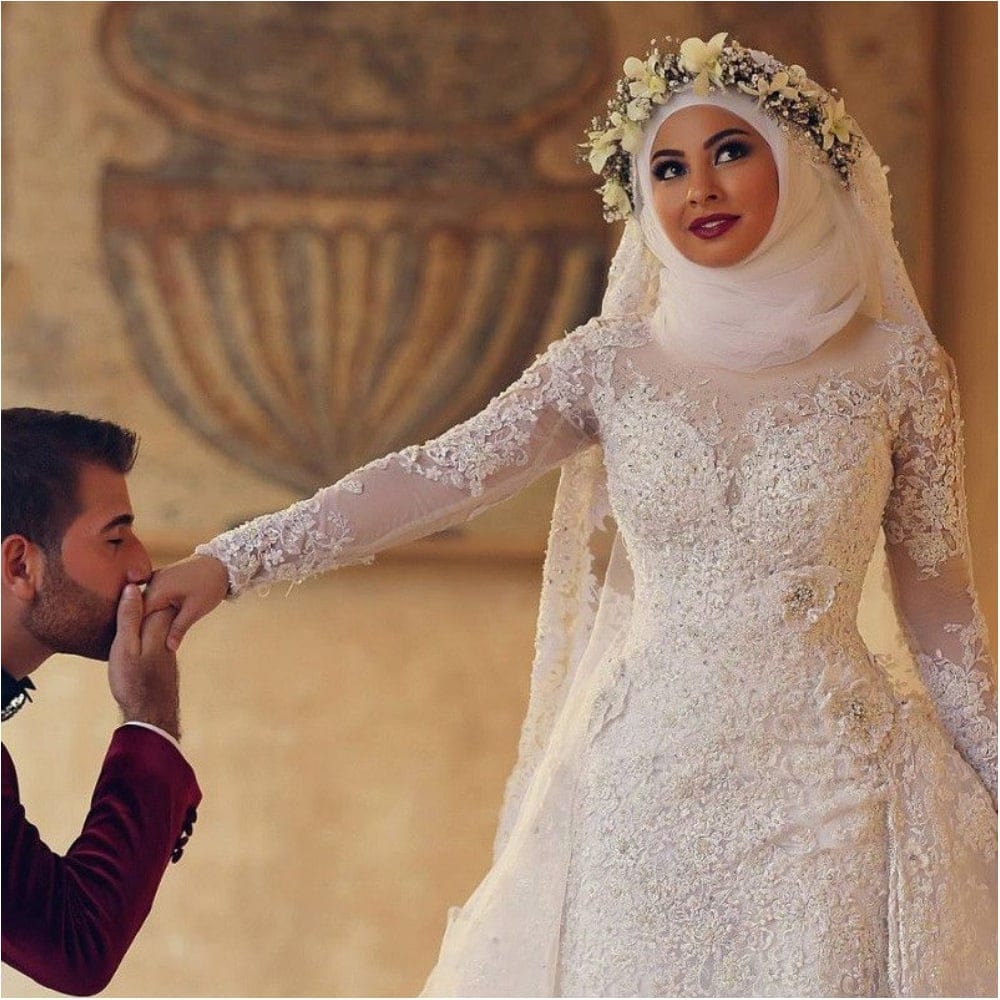
Although the Saudi wedding ceremony is more on the extravagant side, weddings that take place in a public venues are always segregated by gender due to the country’s strictly conservative and tradional Islamic culture, which make them extremely private and intimate affairs.
Wiccan Handfasting Ceremony
A Wiccan wedding, or in its other name, a handfasting ceremony, can be held at any time or day of the year. Some days are considered more special than others, such as Summer Solstice or May Day. An important factor in the Wiccan ceremony is the weather, because most wedding ceremonies are held outside.
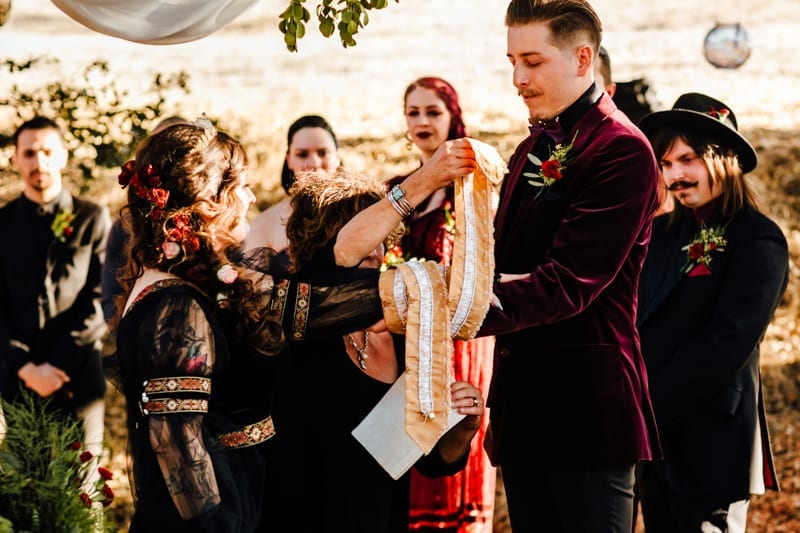
In this wedding ceremony, there are always new and special types of wedding attire, but there are more popular styles which can be seen more often than others. The brides, for example, will wear a long, flowing dress. The groom will most likely wear a shirt with embroidery or a kilt.
Khakassia Warm Wedding
Khakassia doesn’t ring a bell? All good; we got you covered. A little geography class: Khakassia is a remote region in Russia near Kazakhstan and Mongolia. Khakassia shares many wedding traditions and many other traditions with Siberian cultures. The Khakassian people suffer from very harsh weather and therefore their clothes are designed to be as warm as possible and of course, as pretty as possible.
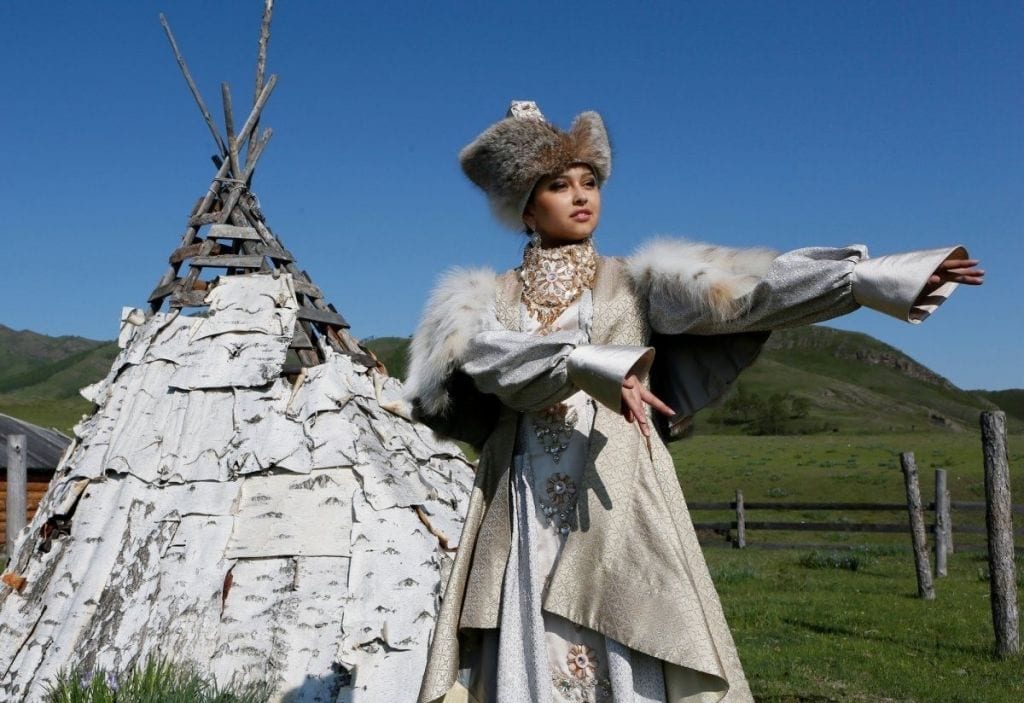
Keeping warm is especially important since the weddings are held outside; to be more specific, in the bride-to-be’s yard. The happy couple and their joyful friends and family will all be warm in their fur coats. Needless to say the bride’s fur coat will be the prettiest.
The Importance Of Weddings In Romania
In the northwest part of Romania’s famous Transylvania region, weddings are considered an extremely important event. Both the parents of the bride and groom organize the wedding as well as the bride and groom to be. There are various rituals, including the preparations of the dowry, customs, and choosing the future godparents.
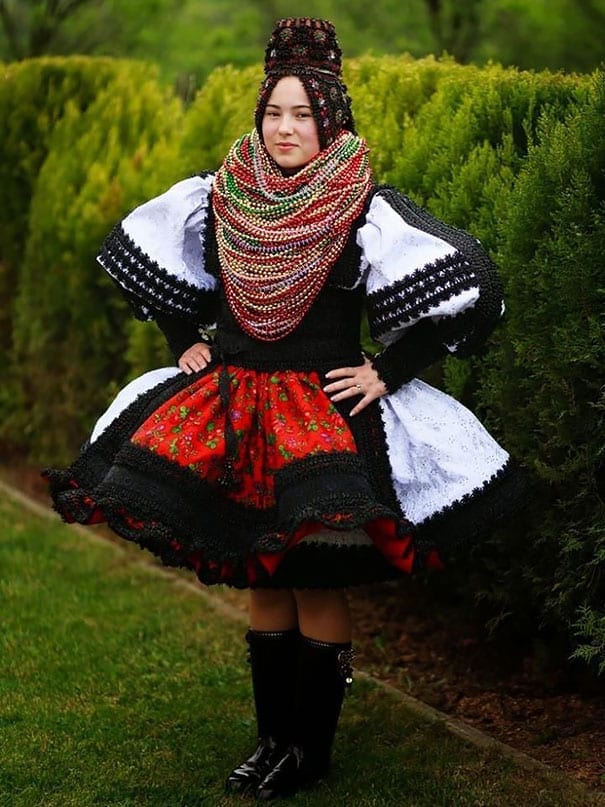
The Romanian bride will be wearing a fotă and a maramă during the wedding procession, which are a traditional wedding skirt and accompanying head wear. The skirt is made from cotton or wool. The bride is also usually wearing a variety of colorful beads.
Estonia’s Colorful Affair
In traditional Estonian weddings, being a bride is a very colorful affair. Traditionally they wear intricately stitched folk dresses, paired with floral head-wreaths. Usually the Estonian couple ties the knot at the local Office of National Statistics; the more common name is Õnnepalee, which translates to the Palace of Happiness.
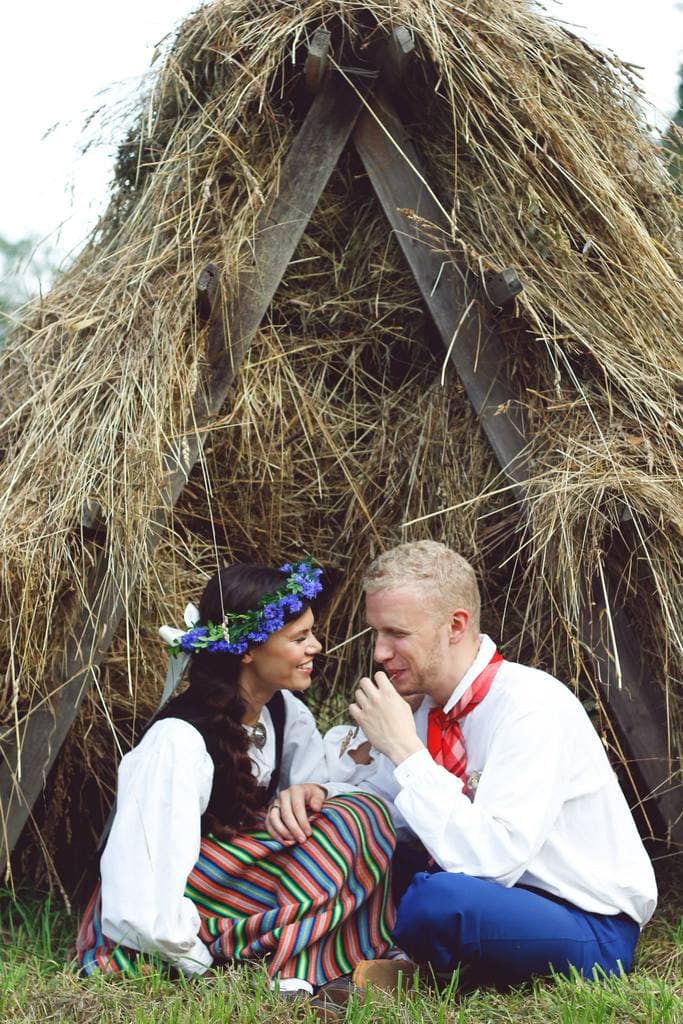
In between the registration and the reception, the couple has a wedding train parade, called a pulmarong. At the pulmarong all the guests drive behind the married couple’s car. During the reception the couple is presented with riddles they need to solve. The topics are usually related to building a home and becoming parents.
The Persian Wedding
The traditional Persian wedding starts with the tradition of Khastegari, which is basically the wedding proposal, asking the woman’s hand in marriage. The Khastegari is held in the woman’s house, where the couple meet for the first time with the intention of marriage.
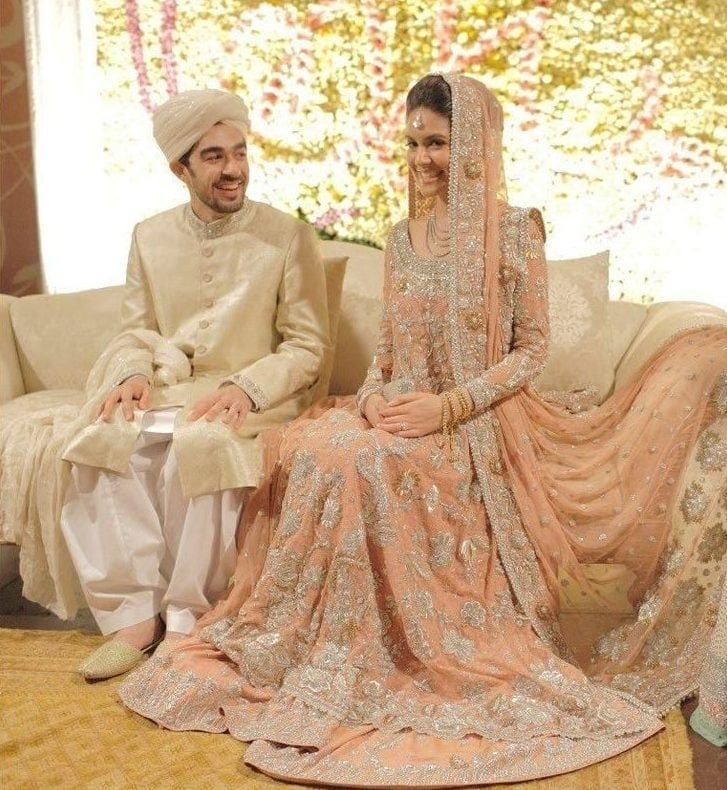
This tradition resembles a traditional date. The man or the woman can decide if they want to end this relationship after the first meeting or continue the relationship. If they both decide they want to continue with the marriage arrangement and everything goes well, the bride will usually wear light colors and not white.
Andean Wedding And Mother Earth
Mother Earth is the most revered goddess to the indigenous peoples of the Andean Mountains in South America. During a wedding ceremony, the locals gather to celebrate the couple in the presence of Mother Earth. The day is spent decorating and preparing food by the parents of the bride and the groom.
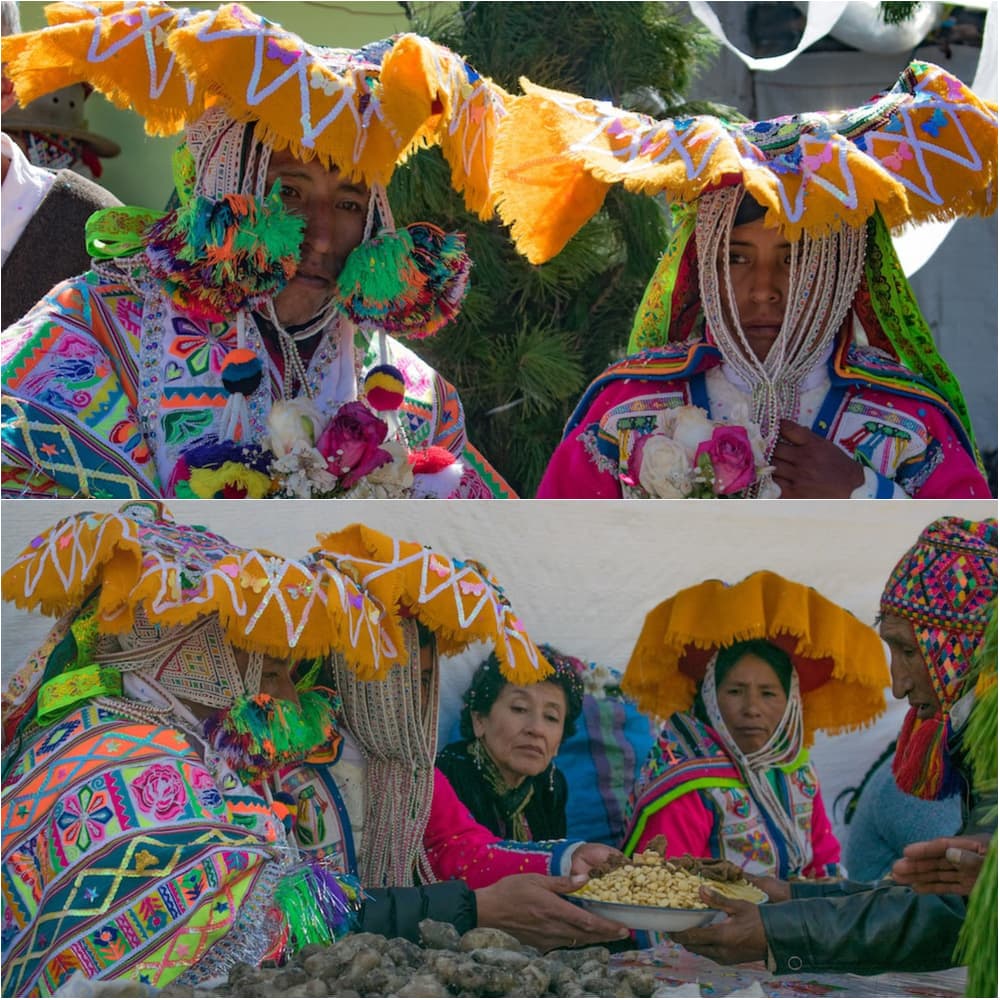
The traditional Andean clothing for a wedding is very detailed. The bride wears a colorful Montera hat, a sequined Jobona jacket and a beautiful pollera skirt. The jacket features scenes from nature. The wedding ceremony itself celebrates the two things that Andeans honor most: Mother Earth and family.
Traditional Vietnamese Weddings
In traditional Vietnamese weddings, the bride wears an over-the-top elegant dress, as well as translucent cloaks, and a headpiece called khăn vấn. The bride and groom’s clothing has heavy embroidery and beads with symbols that historically represent the Vietnamese emperor; for example, phoenixes, dragons, and other imagery from the Vietnamese tradition.
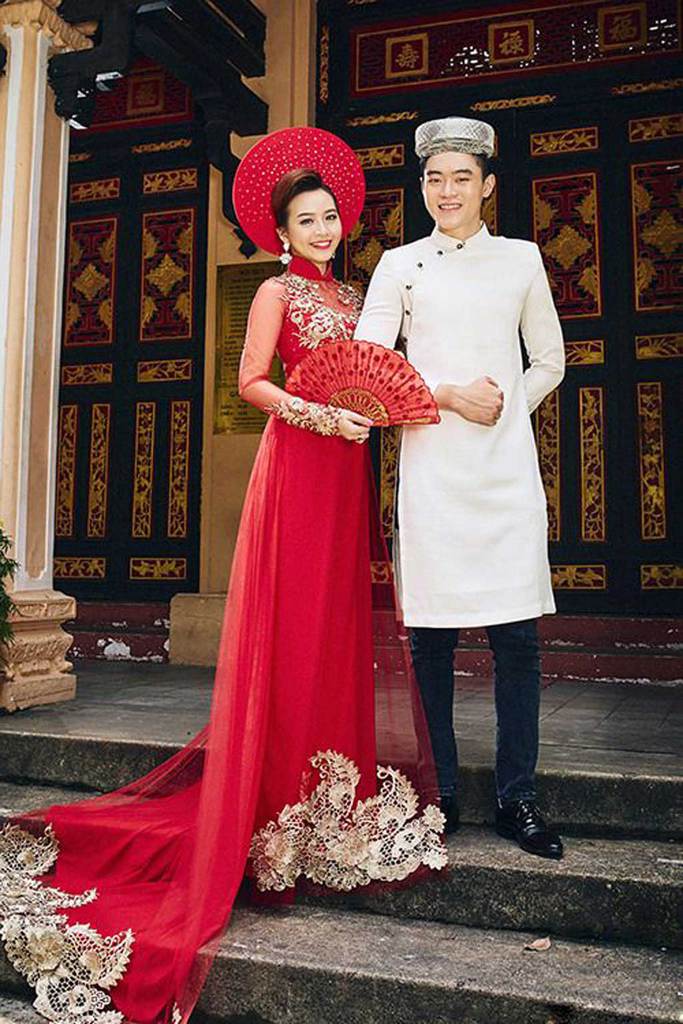
In the early stages of the wedding, the bride wears no jewelry. Later on during the ceremony, however, she is given some jewelry. Before the wedding, the family and friends of the groom go to his future bride’s family home with an odd number of presents. This tradition is done to represent luck for the marriage.
The Mysteries Of The Nomadic Gorani People
Oh, you never heard of the Gorani people? So first of all, Gora is not a country but a region, which sits in the South Balkans between Kosovo and Albania. Another surprising thing about the Gorani people? Their amazing wedding dresses, of course!
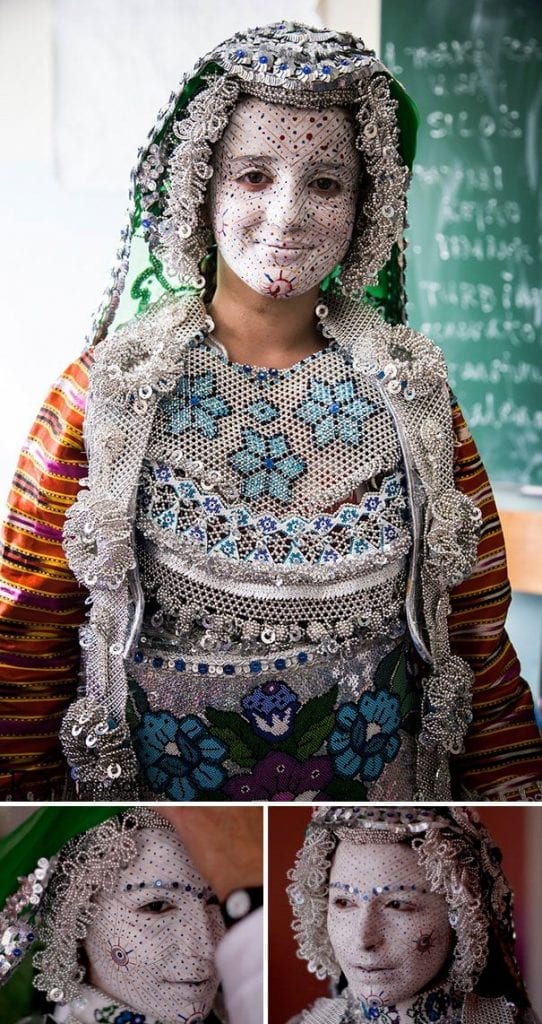
The Gorani wedding celebrations canlast for at least three days. They carry the bride on a white horse. The bride is covered with a custom-made scarf and an embellished umbrella to the husband husband’s neighbor’s house, who is the host of the wedding.
The Wonders Of Great China
Traditionally in a Chinese wedding, the bride and groom will opt to wear red. In Chinese culture, the color red is usually associated with luck. In addition, it is thought to keep away evil spirits, and represents love and prosperity. Similar to other cultures around the world, the bride and groom are dressed by their respective families.

Whenever the future groom is ready to pop the question to his loved one, he will go to the future bride’s family house, where then he will be blocked by her chosen bridesmaids. Once given the permission to pass, the families join each other for a tea ceremony.
The Samoan Status
In the Samoan culture, status is of the utmost importance. This means that people marry within their own social class. When a couple is set to get married, the weddings are paid by both families and the expenses are divided equally.
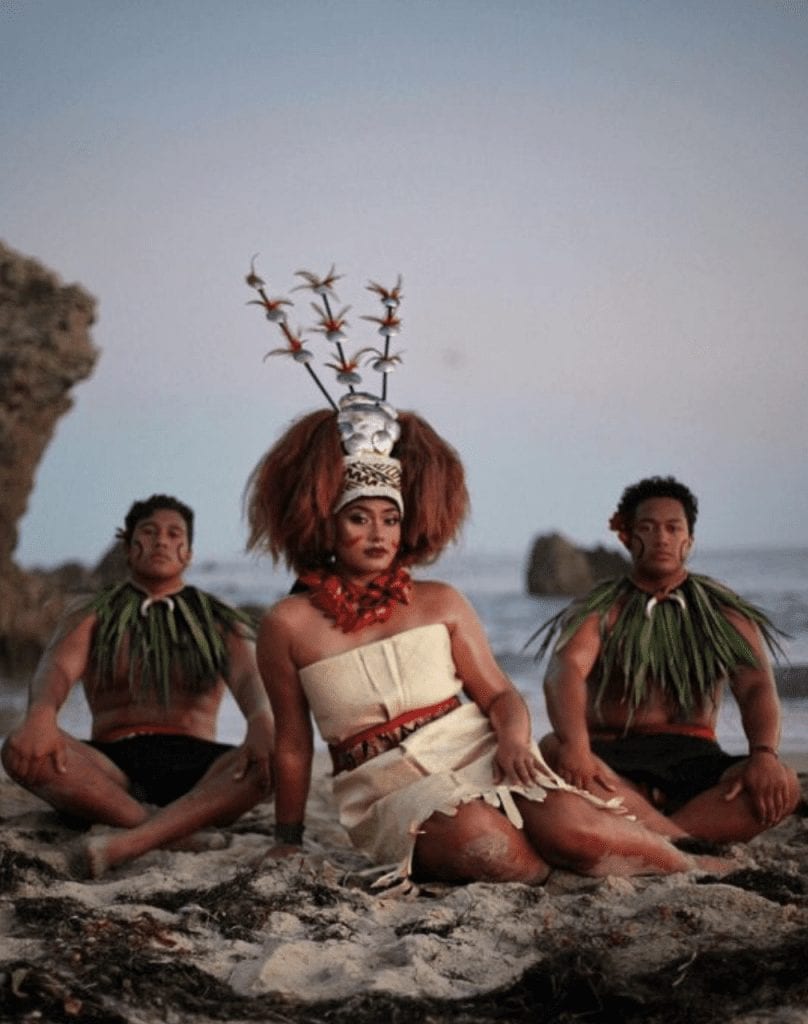
Immediately after after the ceremony, the reception takes place. The bride performs a traditional Samoan dance for the guests, which is called taualuga. Young girls in Samoa grow up learning this dance from a young age. They learn this dance as preparation for their wedding day. When the bride is done with her dance, the guests may be served food.
The Wedding Traditions Of Turkmenistan
One of the least accessible nations on Earth, this Central Asian nation has dazzling wedding traditions. The bride’s traditional wedding attire is a red dress made from homemade silk with silver gilded pendants. Interestingly, during the wedding, the bride is expected to keep quiet and not talk with her groom.
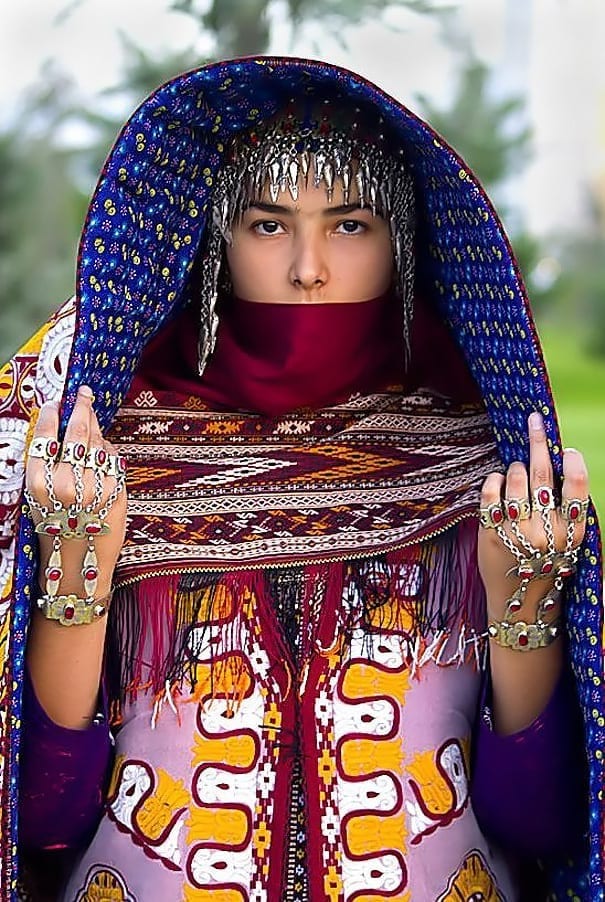
Additionally, the bride is expected to wear a red cloth around her mouth as a symbol of her devotion. The bride is not supposed to make any eye contact during the ceremony and should keep her eyes looking down at the ground.
The Indigenous Group Of The Huipils Of Mesoamerica
Throughout Mexico and the Central America region, there are many different indigenous groups. Their roots lay with the ancient Mayan people and culture. These different groups traditionally wear various huipils for different ceremonies, especially for weddings. The huipils are loose-fitting tunics, with rich symbolism of different mythological imagery like animals and flowers.
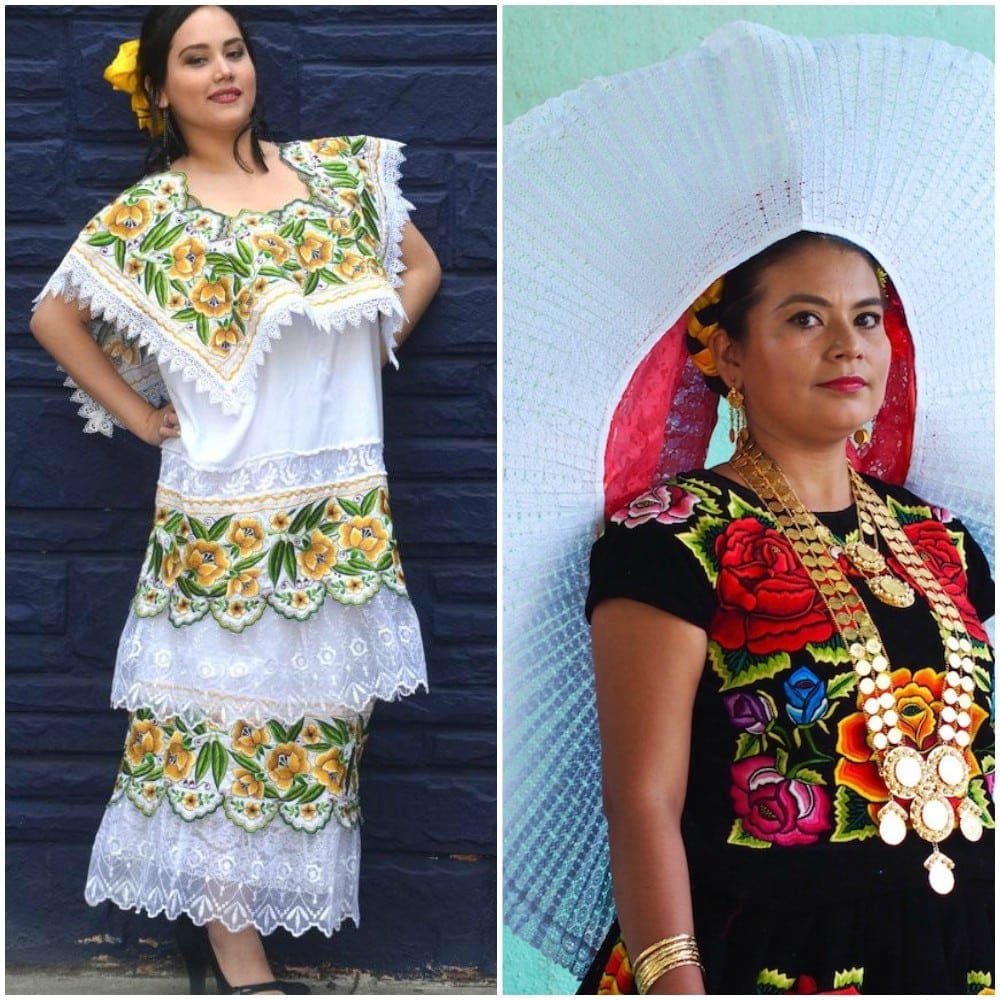
In today’s modern world, this traditional and unmistakably Mesoamerican style of clothing is still popular in the Mexican states of Chiapas, Yucatán, Quintana Roo, Oaxaca, Tabasco, Campeche, Hidalgo, Michoacán (where they call it huanengo), Veracruz, and Morelos. You can also find similar variations across the border in Guatemala.
Malaysia’s Bright And Beautiful Colors
Traditionally in Malaysian weddings, the groom wears a long sleeved shirt and pants which are called baju melayu. The brides on the other hand, wear a sarong over a long dress, called baju kebeya. The happy couple is dressed in many different beautiful and bright colors. Additionally, the clothes are embroidered with beautiful gold thread. The bride and groom cover their heads with decorative cloths.

Before the actual wedding ceremony, the couple celebrates in a two-day ceremony called the bersanding ceremony. In this ceremony, the couple visits the homes of both the bride and the groom. The couple sits on decorated thrones, they are lavished with many blessings and gifts, including yellow rice and flower petals which are symbols of fertility. At the end, the bride serves her new husband a cooked meal for the first time. This tradition is called makan berdemai.
Romantic Spain
A traditional Spanish wedding dress includes a mantilla, which is a headdress made from lace. The mother of the bride usually provides the embroidery for her daughter’s headdress. The mantilla is a lace veil which is worn over a high comb called a peineta. There are some Spanish brides who decide not to wear the peineta and put the mantilla directly on their hair.
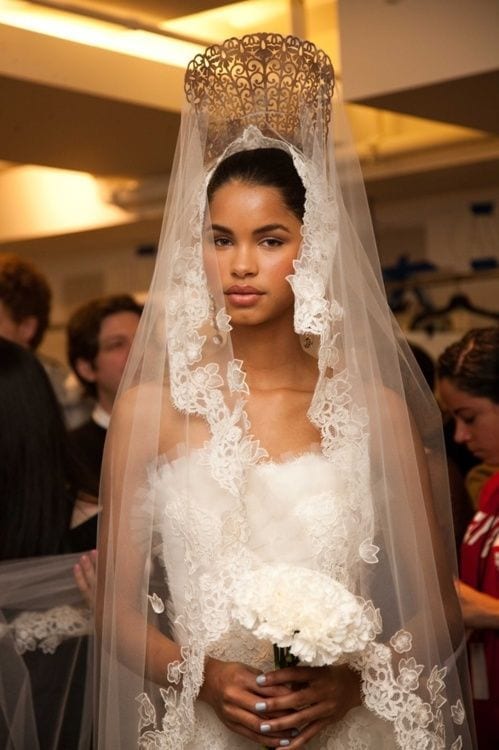
While traditionally a mantilla is made from black lace, most Spanish brides wear a mantilla that is made of white lace. The traditional bridal dress is wonderfully delicate and intricate and will include fine lace detailing, a collar made out of lace, and lace sleeves.
Russia’s Week-Long Wedding
Across the massive expanses of Russia you can find over 185 different ethnic groups. Each ethnic group has has their own separate wedding traditions. Russian weddings can last from two days to an entire week, and their style is steeped in traditions dating back to before Christianity and Islam arrived.
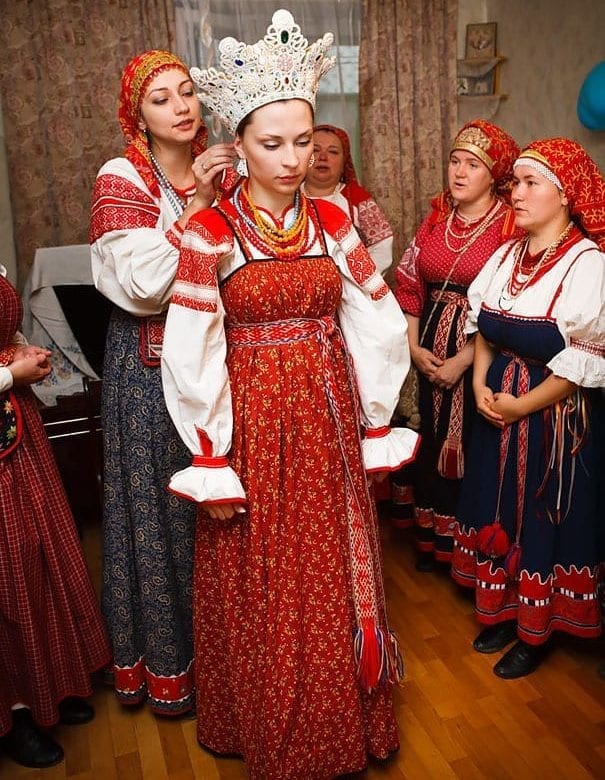
The main form of weddings and weddings traditions which can be seen in Russia are by the Eastern Orthodox Church. Their wedding resemble Western weddings. One main difference is that the bride and groom wear crowns after saying their vows. These weddings can last for up to a week.
Weddings In Java
Besides wearing a traditional sarong, traditional weddings in Java will feature a Javanese headdress called a blangkon for the groom, while the bride will wear a selendang. One of the wedding preparations is called hajatan. This preparation is done in order to ward off any ill outcome of the marriage.
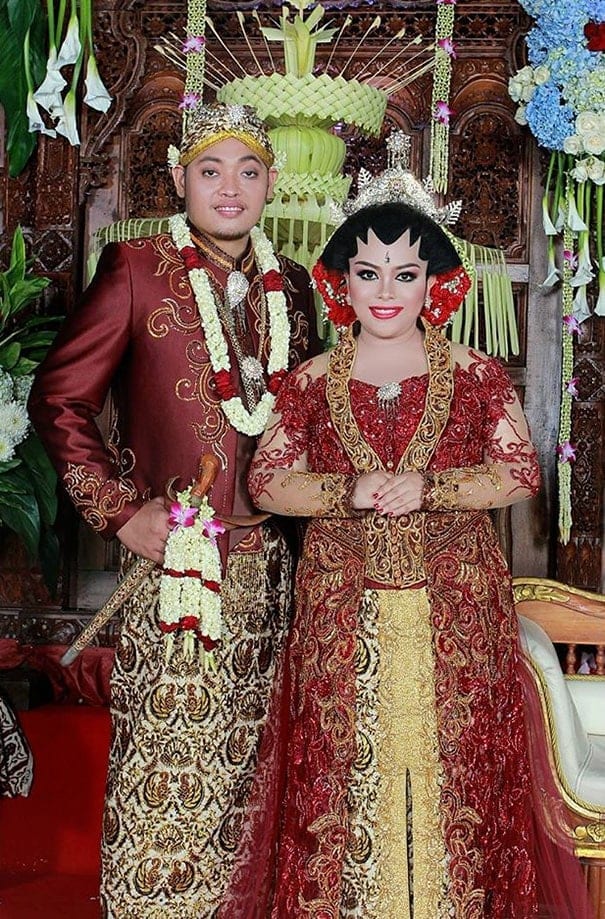
The Javanese couple is then showered with water by their closest friends and family. This tradition is called siraman. After completing this tradition, the couple moves on to another tradition. The mother of the bride serves sweets called ‘dawet’, while the father of the bride holds an umbrella over his daughter’s head. This tradition symbolizes the cooperation that makes a marriage work.
The Nomad Tribe Of The Bedouin
The Bedouin tribes live in different desert regions of northeast Africa and the Middle East. In Arabic the word “Badawi” means nomad, the word “bedouin” comes from this. In the Bedouin culture, the groom must pay the father of the bride. Some of the money is used in order to buy the bride traditional Bedouin jewelry. In some cases, the payment for the bride is done with animals, such as camels, instead of money.
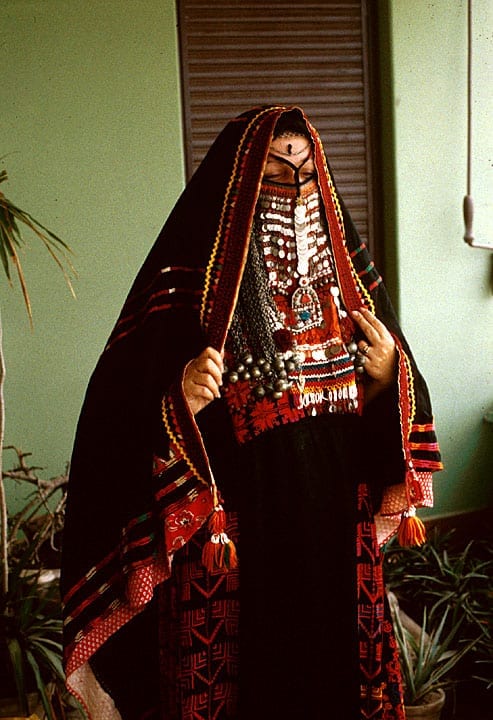
The fabric for the bride’s wedding dress is given by the female members of the groom’s family. The friend’s of the bride apply henna tattoos on her hands and feet. This tradition takes a whole evening of celebrations known as “laylat al-henna.”
Uzbekistan’s Intriguing Wedding Traditions
In the Uzbek tradition, the couple celebrates their engagement in a ceremony called Fatikha-Tui. This ceremony is done after both parents of the bride and groom consent to this marriage. If the parents of the bride consent, they will break bread together as part of the sindirish tradition. This tradition is done to signify that the woman is engaged. In regards to payments for wedding, the groom’s family will proceed to pay for all of the wedding expenses.
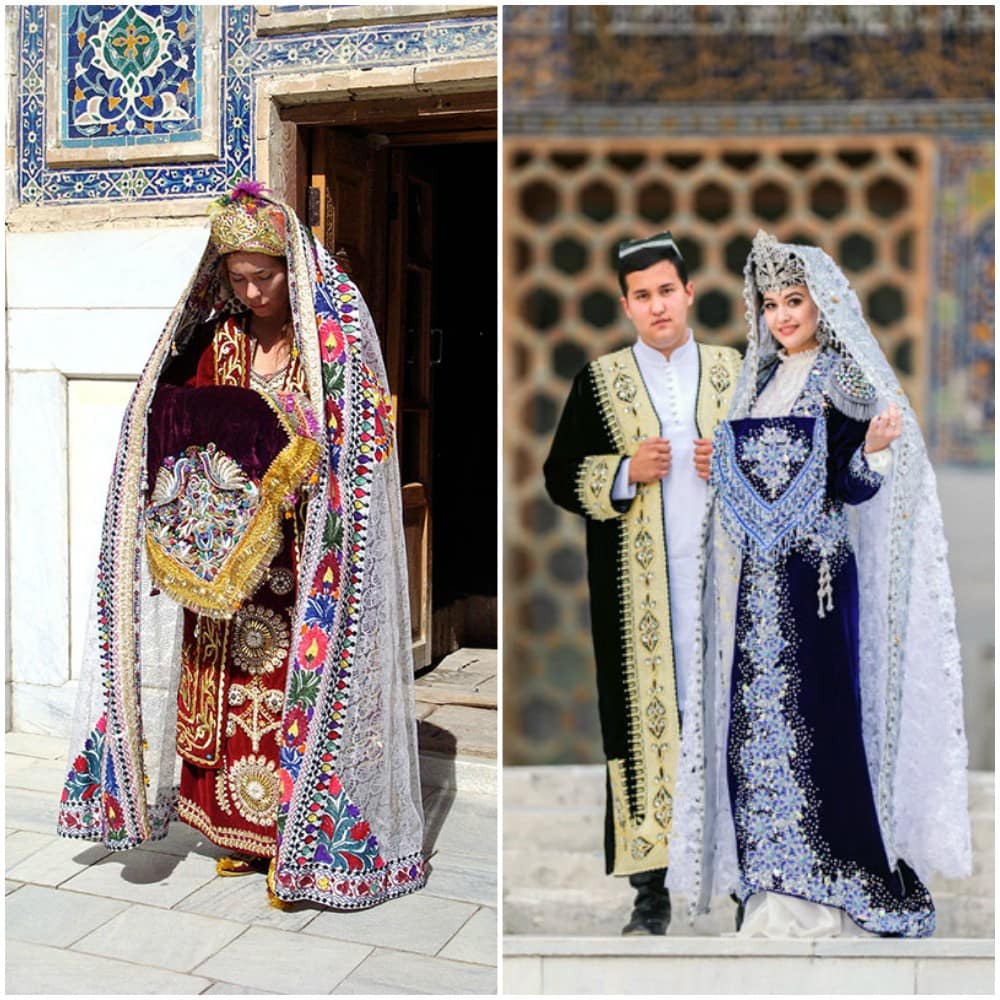
On the morning of the wedding, there is a party where the men blow a two- meter long horn while the groom dances on stilts. Towards the afternoon, the groom, accompanied by his male friends, heads to the bride’s home singing and dancing.
The Vibrant Zulu Nation
Similar to other African weddings, this people’s wedding is filled with vibrant music, color, with plenty of dancing and feasting. The Zulu wedding wins the popularity contest for its magnificence, and grandiosity. On her wedding day, the bride is decorated with white and red ochre. Additionally, bags filled with pebbles are tied to her feet, which add to the rhythm of her dancing.
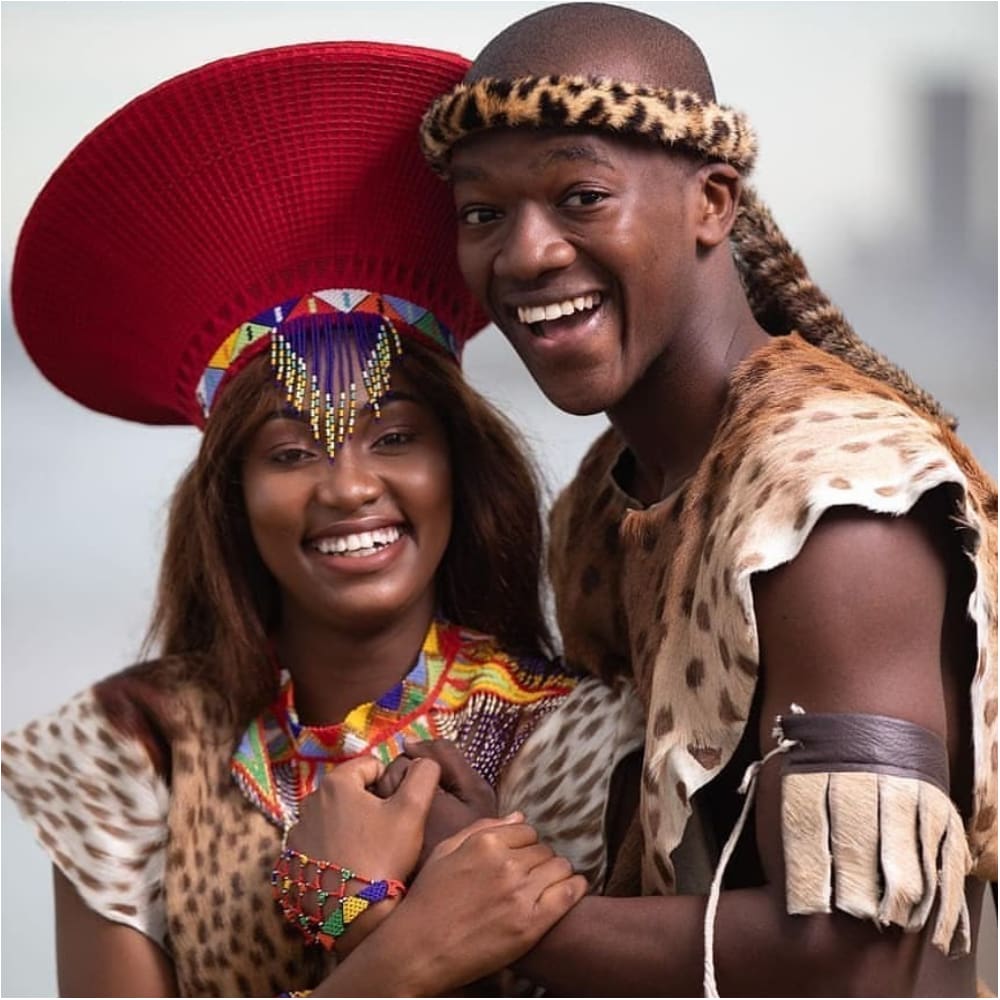
The bride also wears a veil made of beads and twisted fig trees, ties oxtail fringes on both her arms and knees, and also wears goat skin on her neck. The highlight of the Zulu wedding is definitely the dance-off between the groom’s and the bride’s families.
The Nomadic Datoga
The Datoga people live in north-central Tanzania and are known as a nomadic tribe. The Tanzanians place major importance on traditional social organization systems in their everyday lives. The Tanzanians believe that kinship provides a strong support system, which is especially noticeable through all of life’s important ceremonies, including weddings.
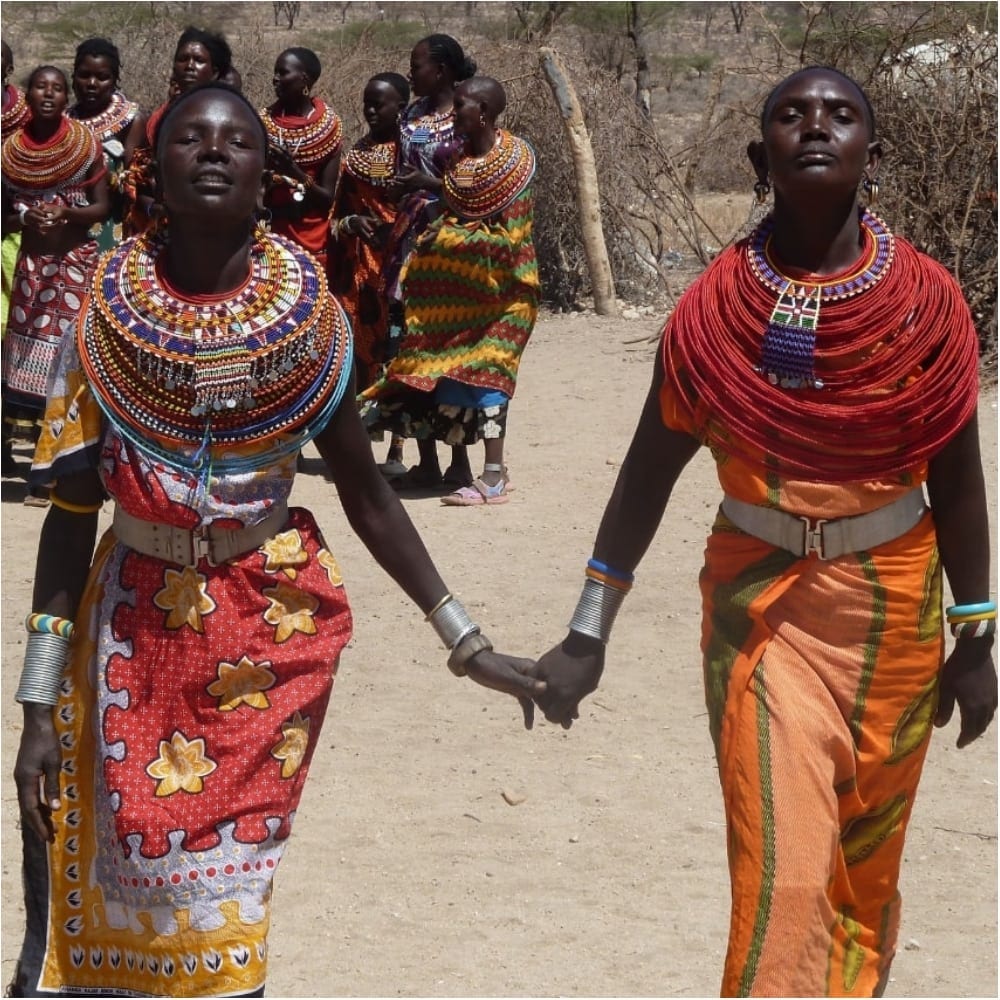
An interesting fact about the traditions of the Tanzanian people is that it is customary for the groom’s family to pick out the wedding dress for the bride. Once the couple is married, the woman needs to wear a long unique skirt made out of thin leather strips. This is a symbol of fertility given by a goddess to the Datoga houses.
Exotic Fiji
In Fiji, traditional weddings are quite the spectacle. It is not unusual for most of the local villagers to take part in the wedding. The bride’s wedding dress is made out of a bark from a mulberry tree, which is pressed into a thin and durable material. This is then made into a fashionable dress.
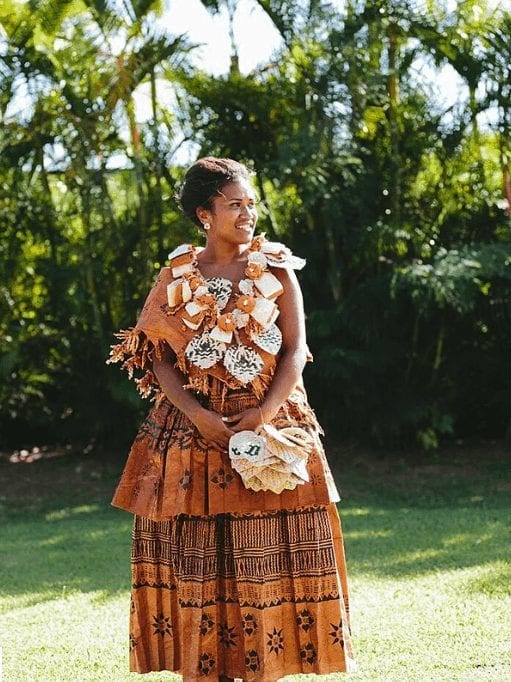
The material of the dress is known as Tapa and it is popular throughout various neighboring island nation societies across Polynesia. Additionally the Fijian bride will also wear a custom Tapa necklace. The bride’s dress tends to have long trains.
The Long-Lasting Traditions Of Pakistan
One of the long lasting wedding traditions in Pakistan has to do with the youthful status of the couple. It does not matter how many decades old the bride or groom are, they will always be referred to as a boy and a girl at their wedding.
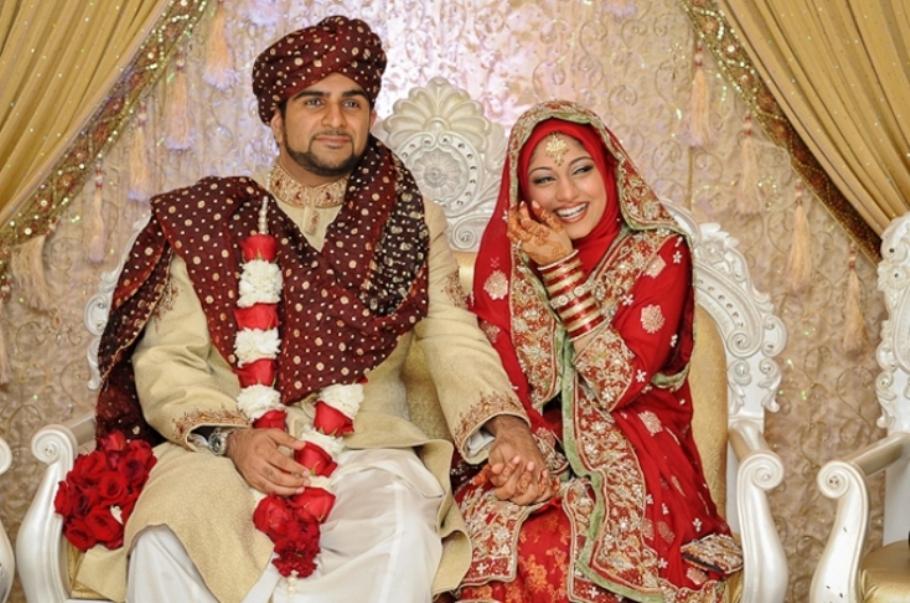
The day before the wedding, the bride is rubbed with oil and bright yellow turmeric on her face and hands by her friends and family. This is supposed to give the bride a beautiful and glowing appearance. She will be adorned with various bangles and jewels.
Colorful Tibet
In Tibet, the groom’s family creates the bride’s wedding dress. The Tibetan traditional wedding dress includes a headdress with silver coins and a small Buddha made out of metal, which is gifted to the bride the day before the wedding.

In the Tibetan tradition, weddings are usually suggested by the elders in both families. When they want to propose a match, an elder from the future groom’s family visits the future bride’s family bringing the family gifts and tea. If they accept the gift, they accept the marriage proposal.
The Traditions Of A Polish Wedding
Unlike many other traditional weddings around the world, traditional Polish weddings are not too hard to find, given the people’s wide diaspora. The bridal attires include a veil cap called a welon, which actually has its own ceremony during the wedding. The welon ceremony is called oczepiny.
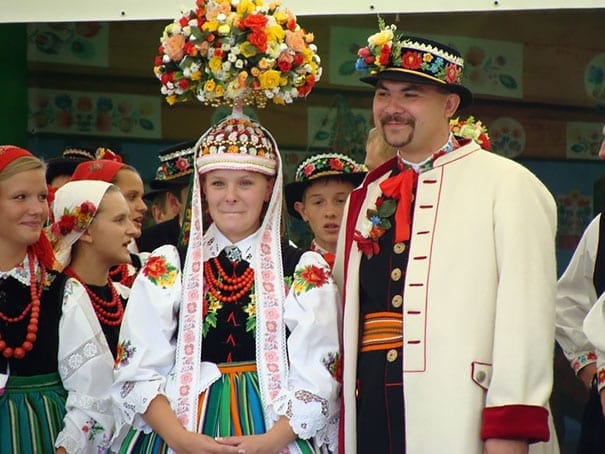
In regards to the groom’s attire, he wears a flower that matches his bride’s bouquet. During the ceremony, the bride will move her dress to cover her future husband’s shoe. The Polish believe that by doing this it will give the bride a place of dominance in the relationship. Another Polish belief is that the bride can die from unhappiness. The flower crown is created for her days before the ceremony to manifest a happy, fertile marriage.
The Blossoming Of The Hutsul People in Ukraine
The Hutsul people live near the border of Ukraine and Romania in the Carpathian Mountains. They are most likely a descendant of the old Rus tribe. The Hutsuls honor many of their traditions until this day. In order to get to their weddings, the bride and groom ride to church on horseback. The couple and their families celebrate for two or three days in a large tent.
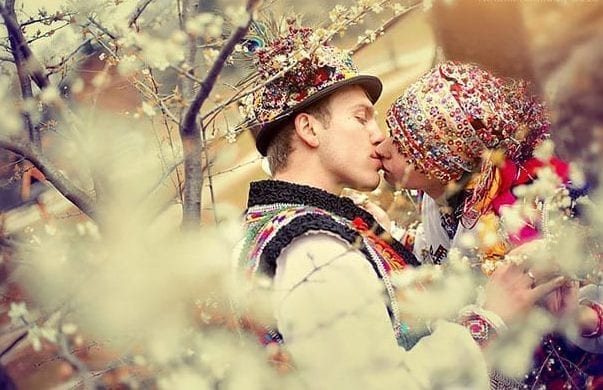
The bride’s wedding dress is made by the delicate handwork of the women of both families. An interesting tradition performed by the Hutsuls is strictly inviting an odd number of people. This is done because they believe odd numbers to be luckier because they can’t be divided.
The Seven Colors Of An Iraqi Wedding
Before the wedding, the Iraqi bride will receive gifts from both the bride and the groom’s families. These gifts include many different dresses in many different colors. The Iraqi wedding ceremony takes seven days. On each of the seven days, the bride will wear a different color dress, seven in total for each of the seven colors of the rainbow.
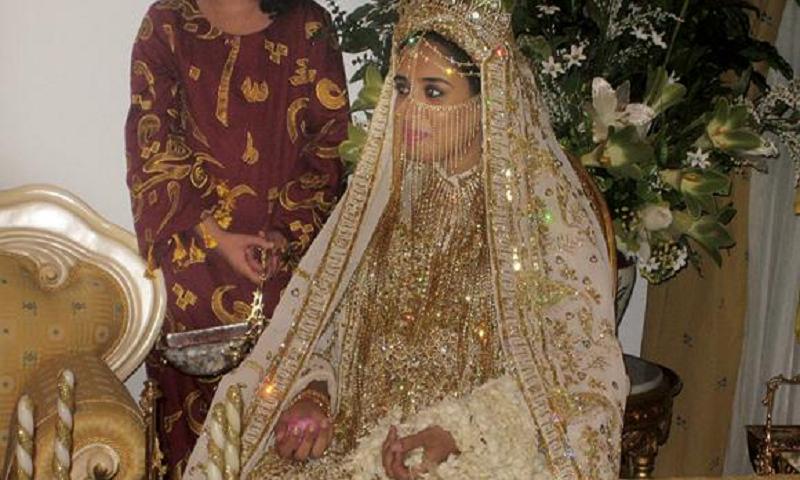
The Iraqi engagement is known to take up to a year and even years. The Iraqi tradition states that a wedding proposal is accepted with rosewater, cordial, and sweet Arabic coffee. Iraqi weddings are considered pretty long and are quite an affair. Once the actual ceremony take place, it is a seven day celebration.
